Sunday 27th March to Thursday 7th April 2022
The 18 days we’d spent in Kulhuduffushi with engine troubles meant we were well behind schedule. We had planned two months of gentle cruising from the north to the very south of the Maldives, about 500 miles in total. We have a permit to then visit Chagos (the British Indian Ocean Territories) for four weeks from 23rd April and time is moving on. Hugh had ordered a replacement exhaust manifold from the U.K. which we were told would be in Malé by the end of March, when our engineer Kanburu had volunteered to come down to Malé to fit it for us. Our friends on Endorphin and Hecla were by now several anchorages ahead of us but we were hoping to catch up with them in time.
Having left Kulhuduffushi we spent a peaceful night at anchor by Farukolhu island and the next morning continued on to cover the 12 miles to Dholhiyadhoo. We actually managed to sail for much of the way in a gentle 8 knots of wind, gradually feeling the tension of the last few weeks lifting.
Dholhiyadhoo is a perfect crescent shaped island with a circular lagoon. There is a ruined resort on the island, a stunningly beautiful spot with a white sand beach, 65 bungalows on stilts over water that changes from azure to turquoise to teal as the light changes. Only two caretakers live here now, the resort never having been completely finished. It was due to open in 2011 but the resort owners defaulted on bank loans. Since then, as the overwater bungalows gradually decay and nature slowly reclaims the land, the resort has been put up for auction several times, starting with opening bids of $60million in 2015 and, more recently, a mere $32million.
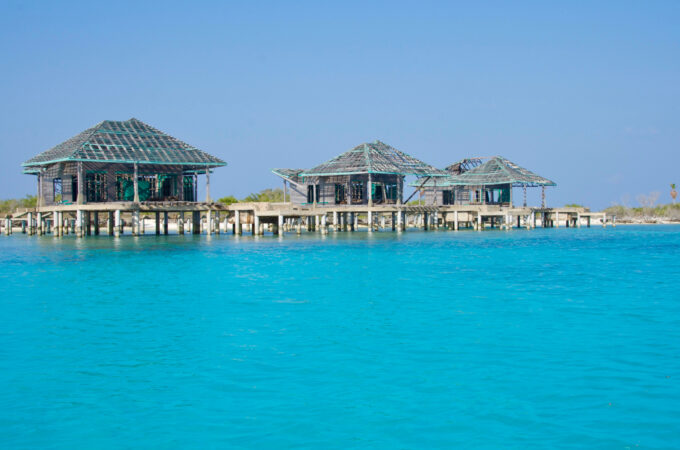
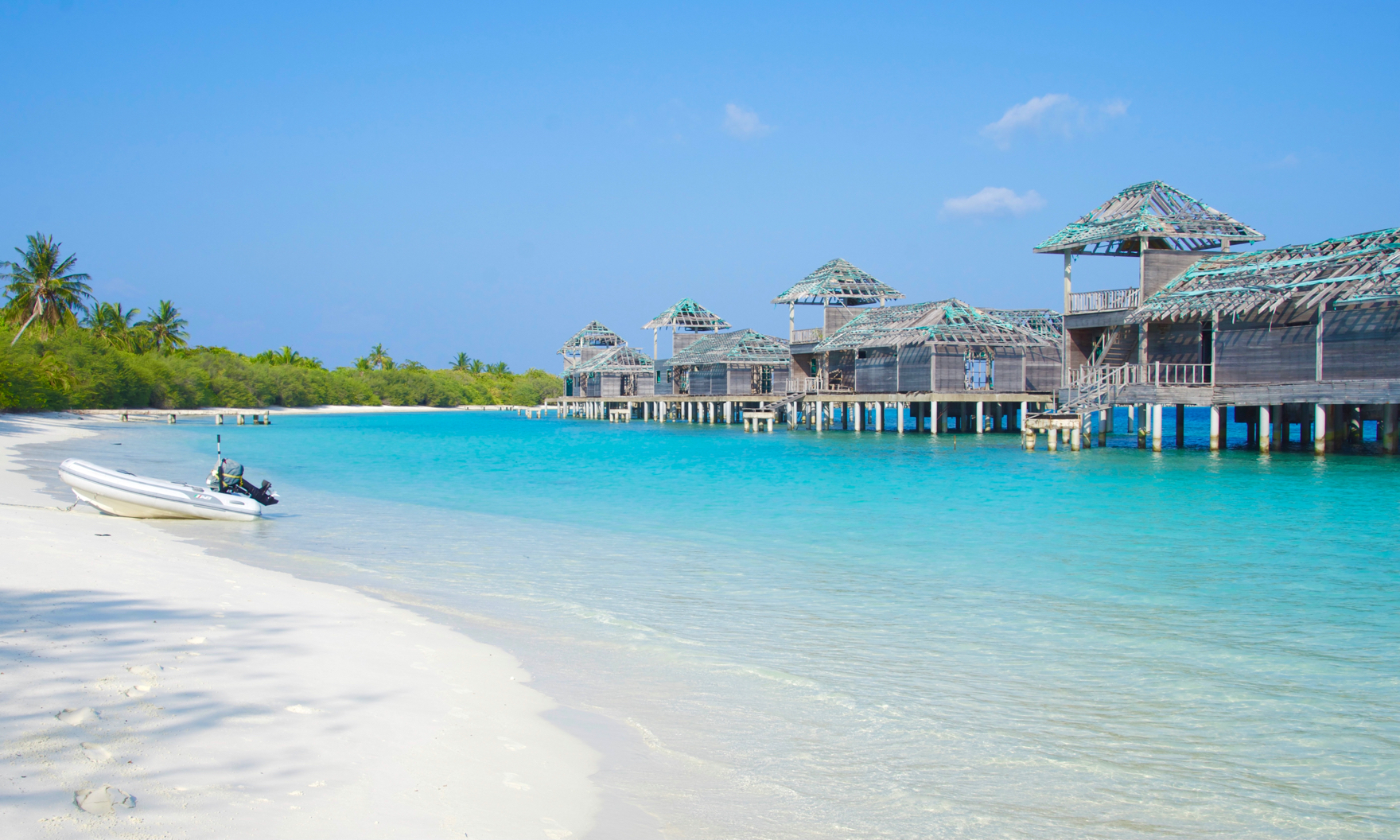
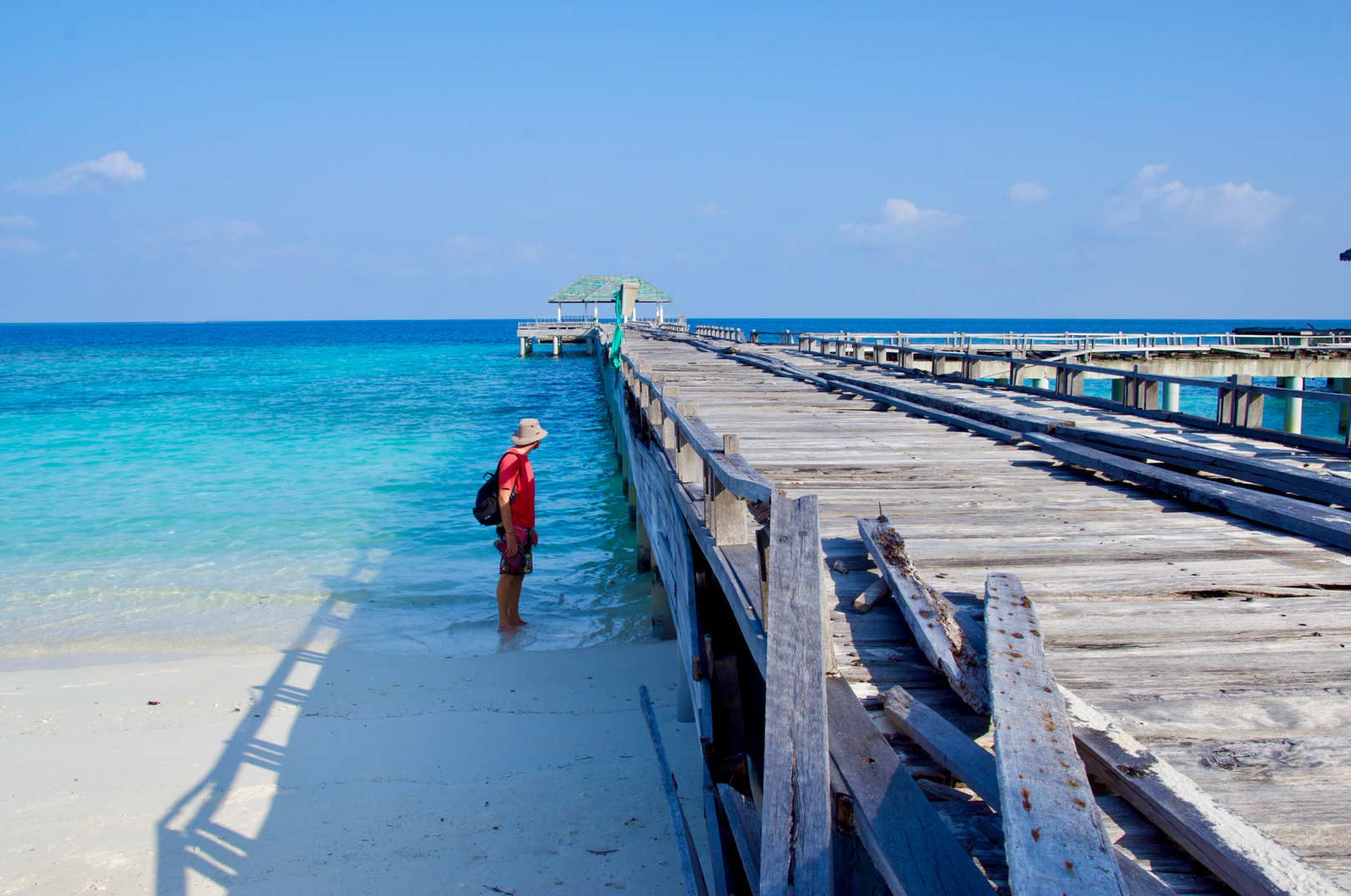
We anchored in the east of the lagoon and took the dinghy ashore on a small beach in a gap between the jetty and a group of bungalows. There were footprints on the beach! As we headed along the shady path, passing ruined villas, being bitten by numerous invisible mosquitoes, we heard voices… it was the two Bangladeshi caretakers who appeared pleased to see us. They had been here for 7 and 2 years and seemed to have been almost forgotten. The generator no longer worked so they had no power and one of them asked if we could recharge a mobile phone power pack so he could continue to talk to his wife and three young children in Bangladesh. They showed us around the staff quarters which were outwardly in better condition than the decaying tourist accommodation, with bougainvillea and frangipani lining the clearing, although the bedrooms were dismal with only paraffin lamps for light after dark. Most impressive was the large and immaculate mosque which we were invited to look around. They produced green coconuts, slicing the tops off and giving us plastic straws so we could drink the coconut water. In exchange we gave them some vegetables and cake, as previous visiting yachtie friends had suggested we do. We didn’t have the cigarettes that they’d hoped for though.
From here we motored 30 miles south and anchored off Kuredhdhoo island where there is a ‘yacht friendly’ resort, but when we went ashore we were stopped by security. The manager, a charming Indian man, apologised but we weren’t allowed into the resort as a guest had just tested positive for Covid. They did however allow us to anchor, as long as we didn’t go ashore, from where we could watch the seaplanes bringing tourists to and from Malé. A meal in their restaurant and scuba diving were off but the snorkelling along the reef was wonderful. The unicorn fish were particularly fun, curious and unafraid. There was the wreck of a fishing boat, sunk deliberately here for divers and snorkellers, perched on the edge of the drop off, encrusted with corals and attracting shoals of reef fish. We got out my little used paddleboard and I wobbled my way around the bay – it was also useful to sit on to scrape the accumulated dirt, from our time in Kulhudhuffushi, off Vega’s hull.
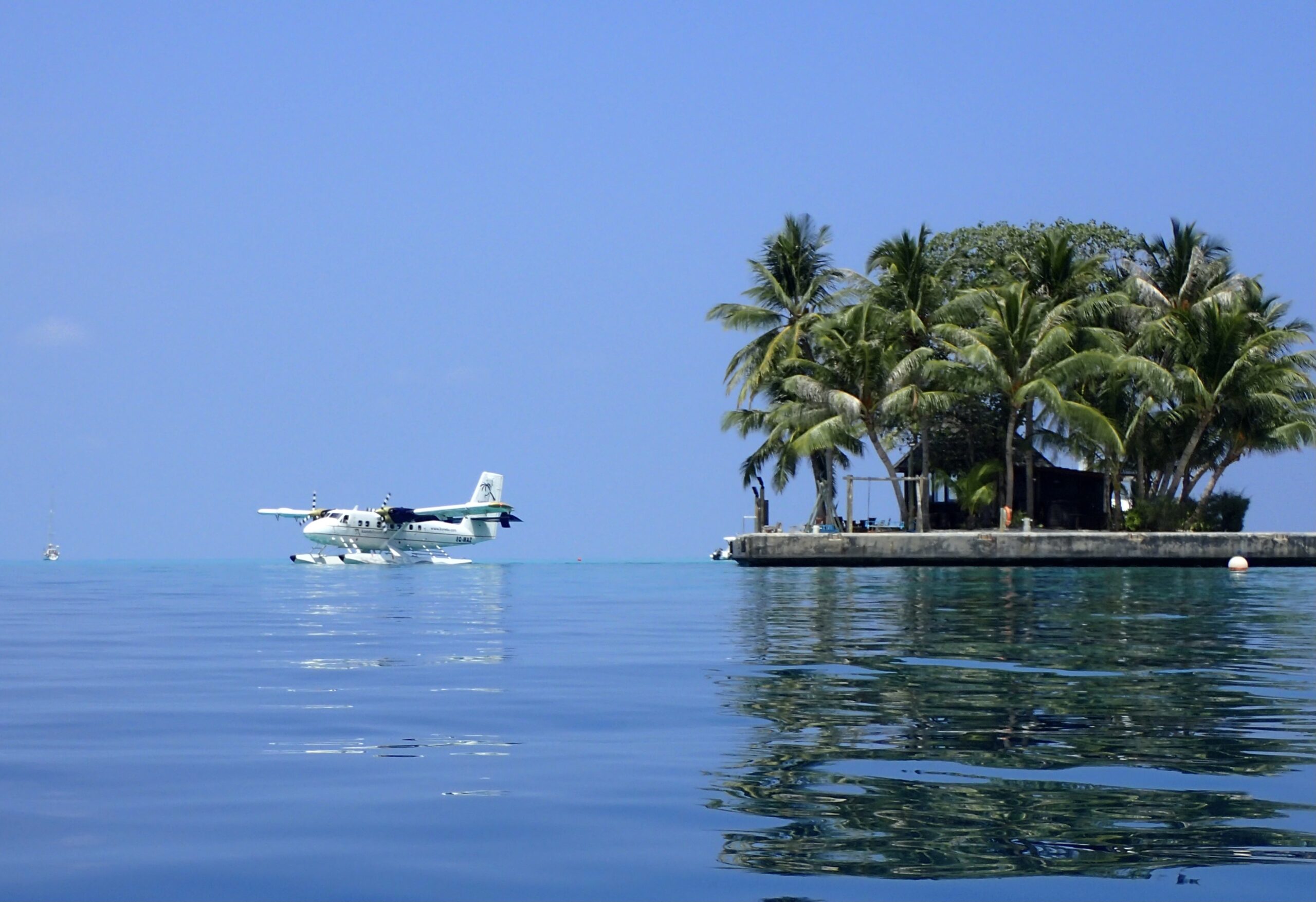
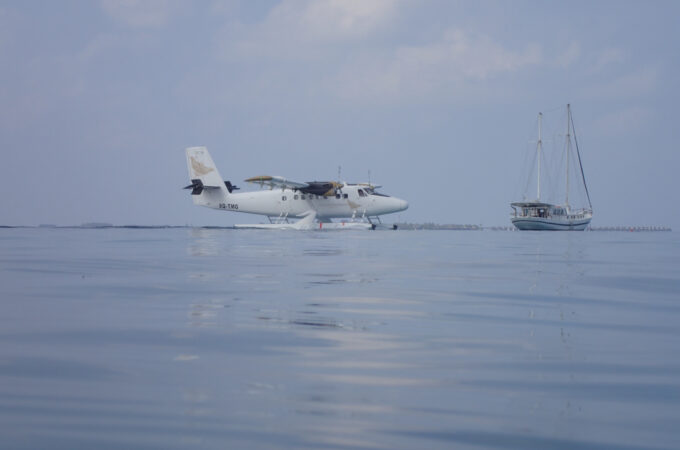
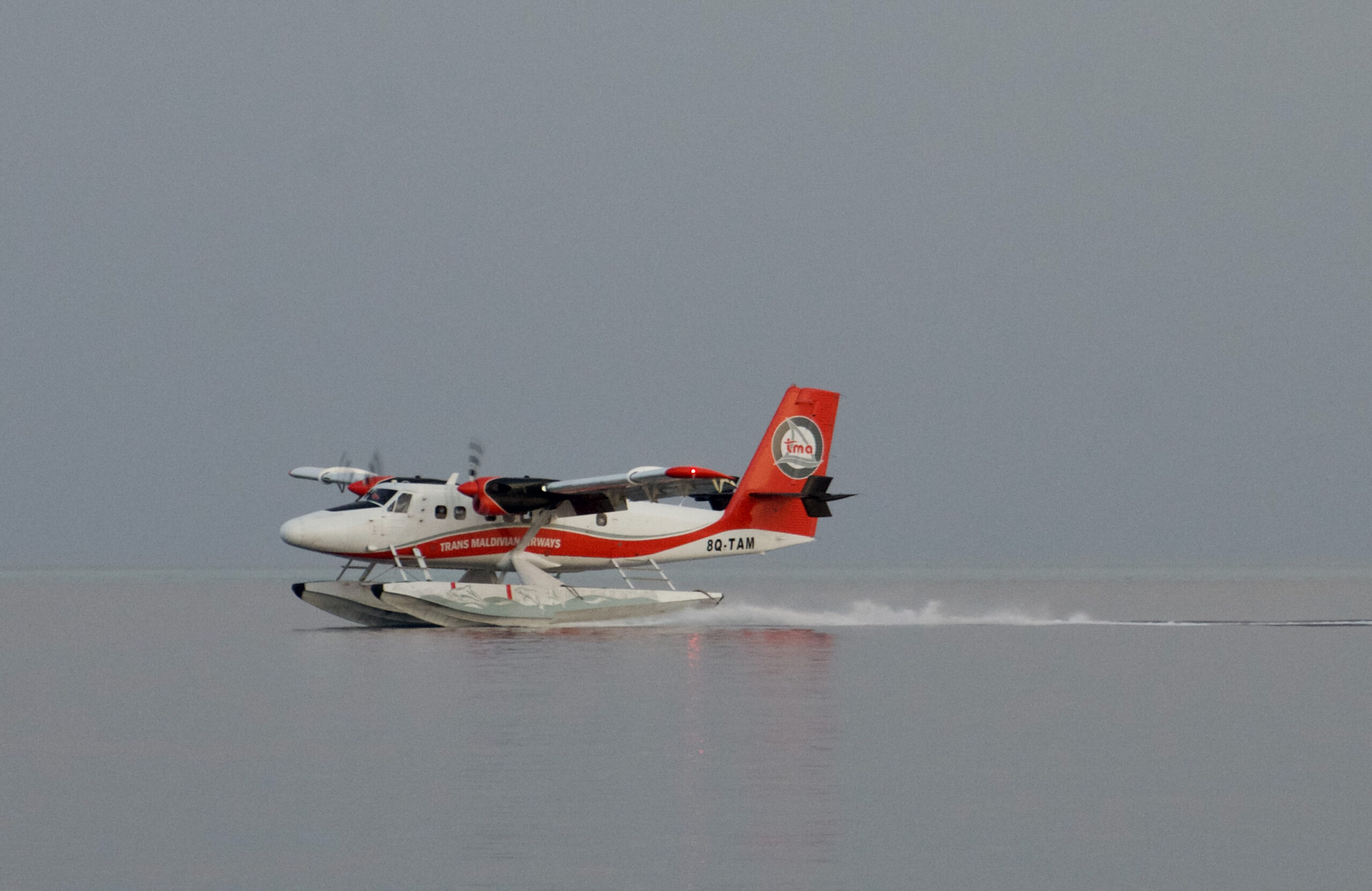
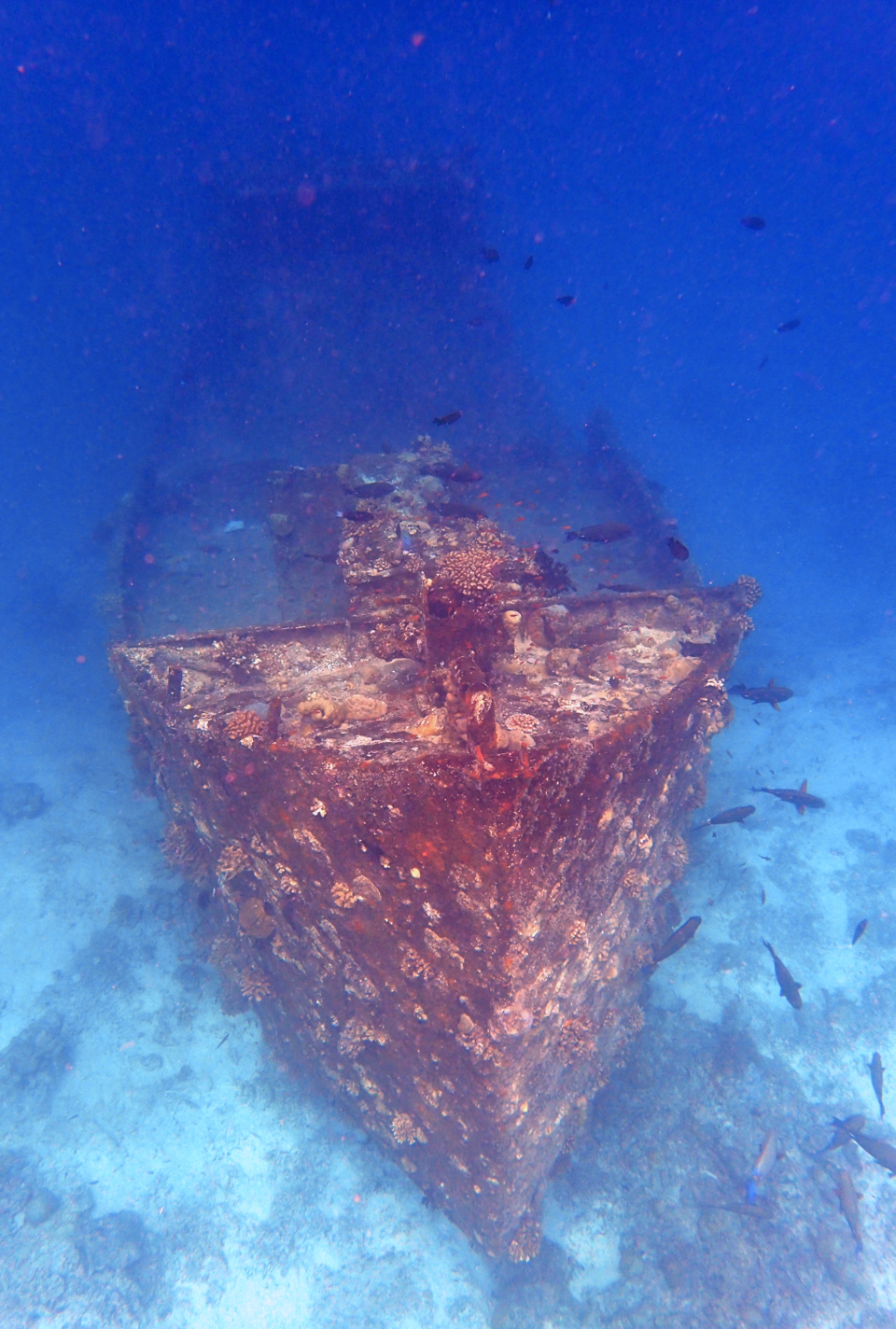
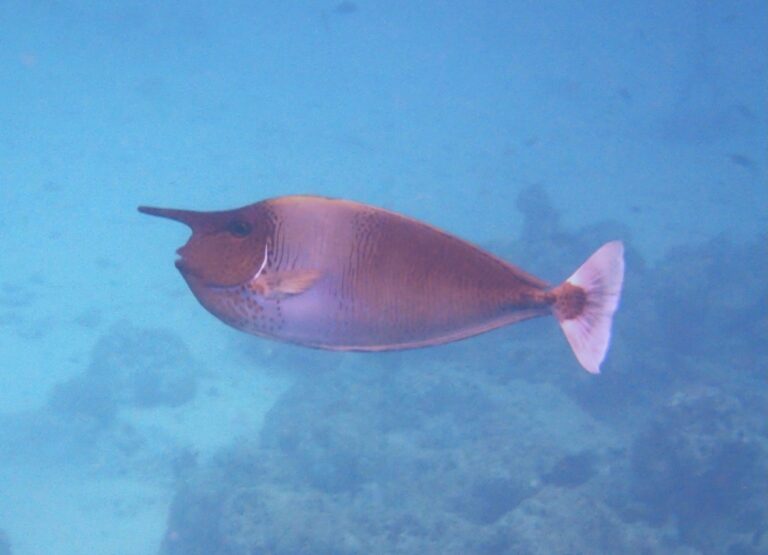
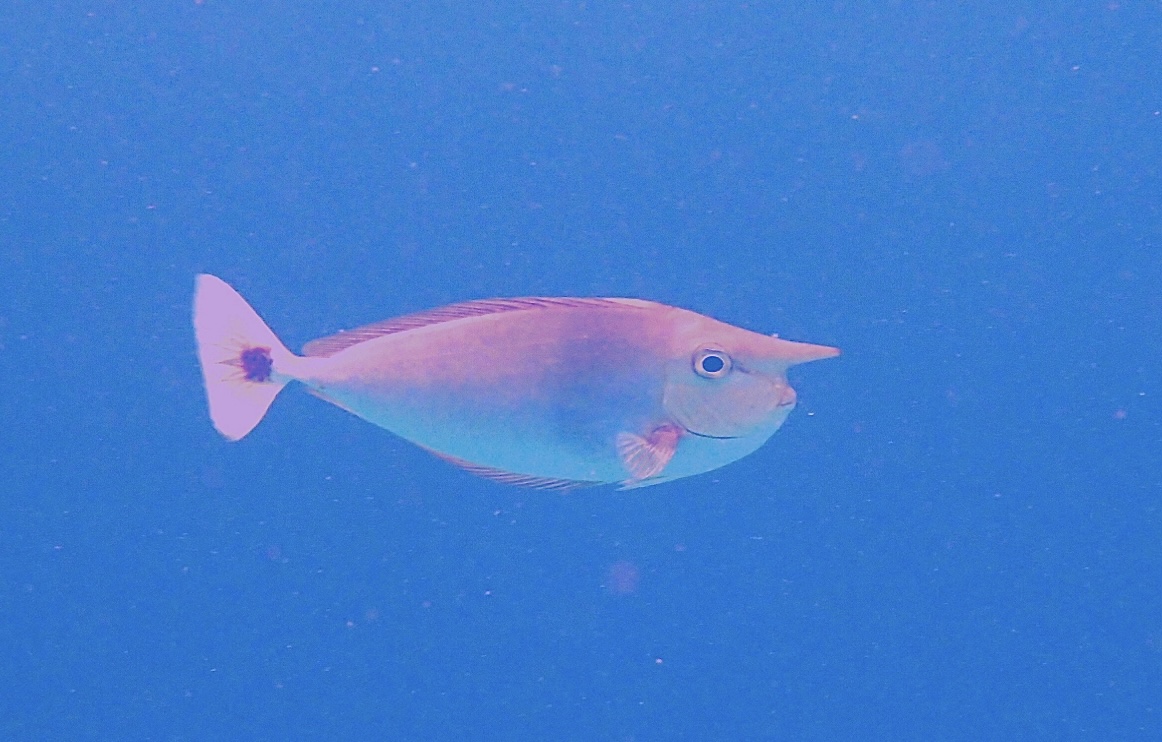
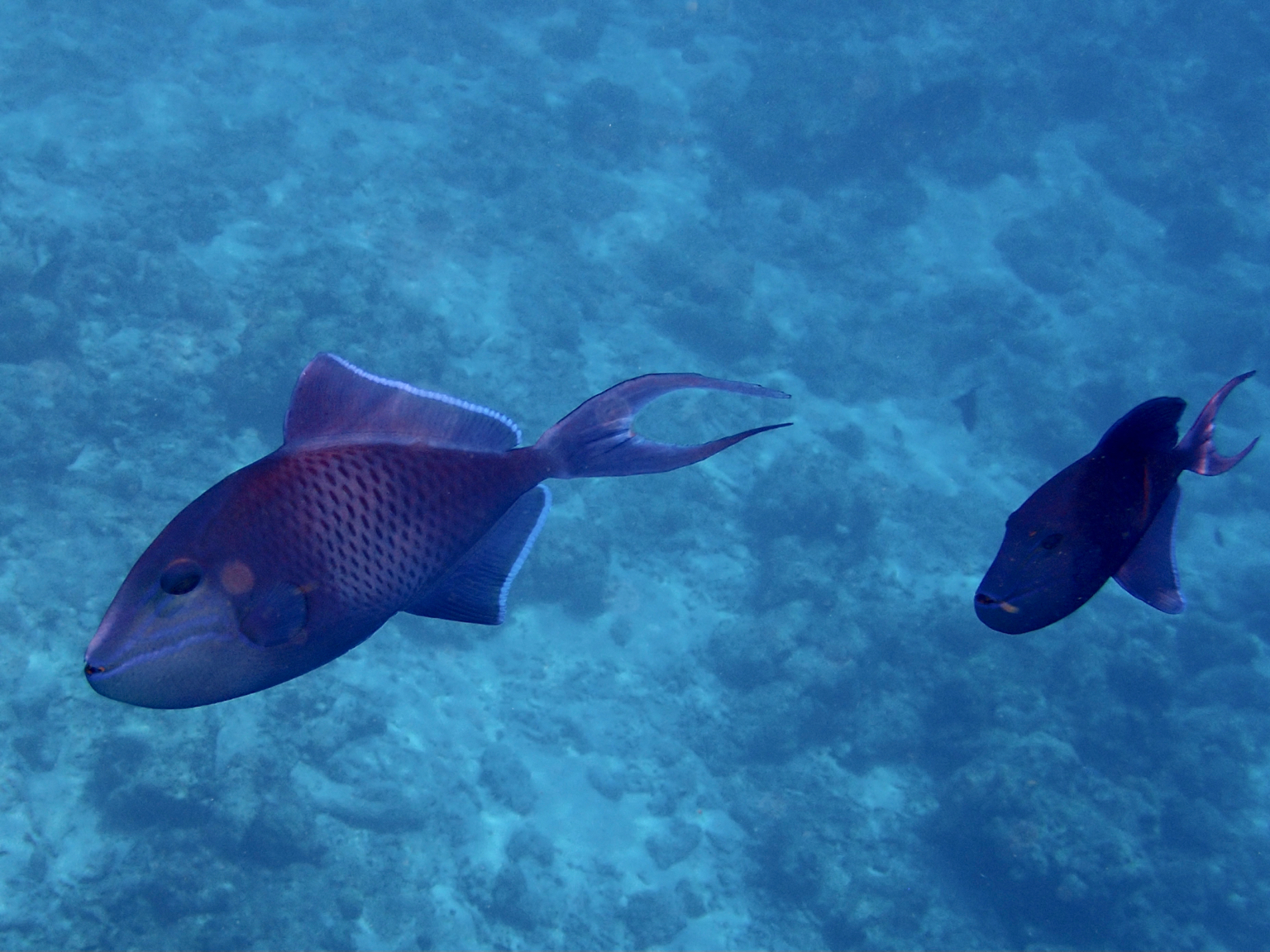
Whilst here we heard that the replacement engine part would not arrive in Malé until at least April 13th, in over two weeks. This would really throw our schedule so we decided we may have to arrange for it to be sent on to the Seychelles.
It was a long trip down to the next atoll so we broke the journey by stopping after 35 miles of motoring at Kaashidhoo island. We didn’t have much information about this island, apart from a government planning document that proposed the two channels leading into the lagoon in the middle of the reef should be dredged to at least 3.5m. Plenty of depth for our boat which draws 1.8m. Assad gave us his approval too, so when we entered the eastern channel we were alarmed as the depth was only 3m, then 2.5m, and it was too narrow to turn around! We were also entering on a falling tide… completely against sensible nautical practice (you should only enter an unfamiliar anchorage on a rising tide, so that if you run aground you can wait for the tide to continue to rise and easily float the boat off). If we got stuck we’d have had to wait until after 8pm before the tide would have risen again sufficiently. The tidal range in the Maldives is less than a meter so I’d decided it was a risk worth taking. Fortunately just after the depth hit 2.5m it started to increase and we pushed on, turned right into the large lagoon and dropped anchor in 5 meters in a wide sandy spot.
Going ashore in the dinghy we were directed by a local where to tie up in the harbour. He then showed around a massive 140 ft wooden cruise boat, being built in a huge shed near the waterfront, of which he was to be captain. Kaashidhoo would have been an interesting place to have spent more time on. Its economy is largely based around agriculture and they grow chillis, papaya, aubergine, cucumber and bananas, the majority of which are sent to Malé and also to some of the resorts. Tourists rarely visit here although, according to the manager of the restaurant where we ate, there are plans afoot to develop a resort and to build a 150 bed hotel.
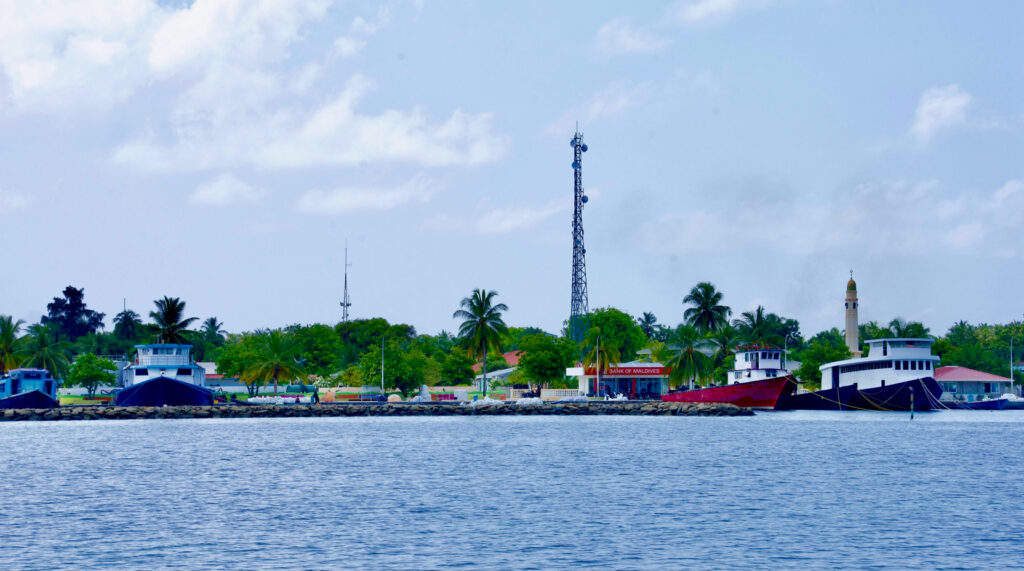
The following morning we left on a rising tide and headed south, seeing spinner dolphins in the distance. Often when we are at sea the dolphins will come to play at our bow for a while but since being in the Maldives they have never done this although we often see them jump and spin from afar…. I suppose they get tourist overload.
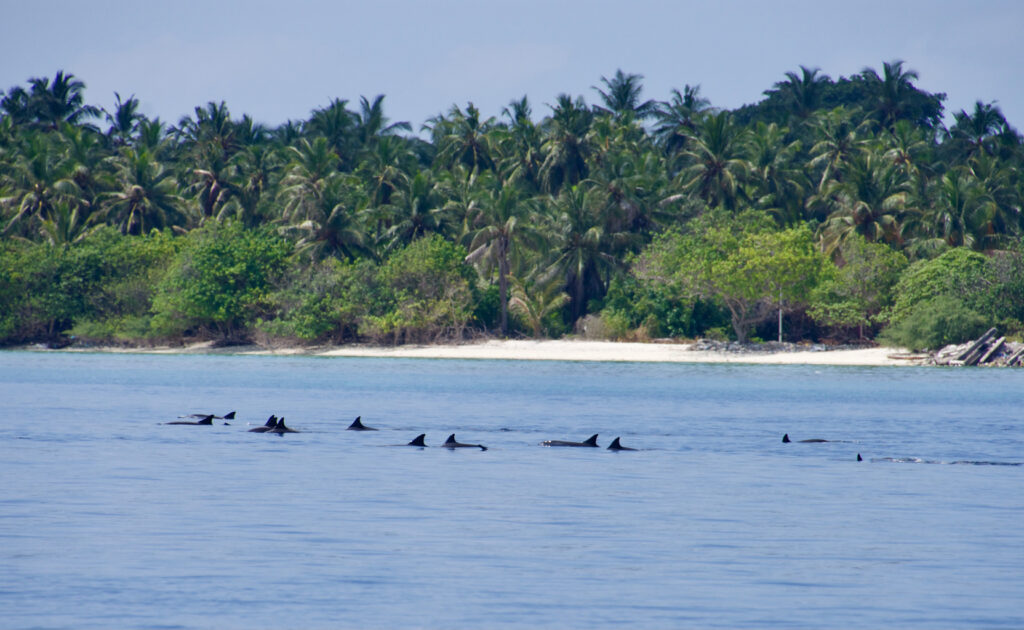
It was a 12 mile motor to Gaafaru atoll, an elliptical reef which has wrecked many ships over the centuries as it lies just under the surface of the water and so is hard to spot. At least six of these wrecks are now dive sites. There is just one island at the eastern end with a population of around 1500 people… a tiny island in a big reef. We entered the reef through one of the two passes in the north of the atoll, dropped anchor in 10 metres in a large sandy patch avoiding the coral bommies, and spent two peaceful nights here, completely alone. It is a strange but wonderful feeling to be at anchor with, seemingly, just sea all around you.
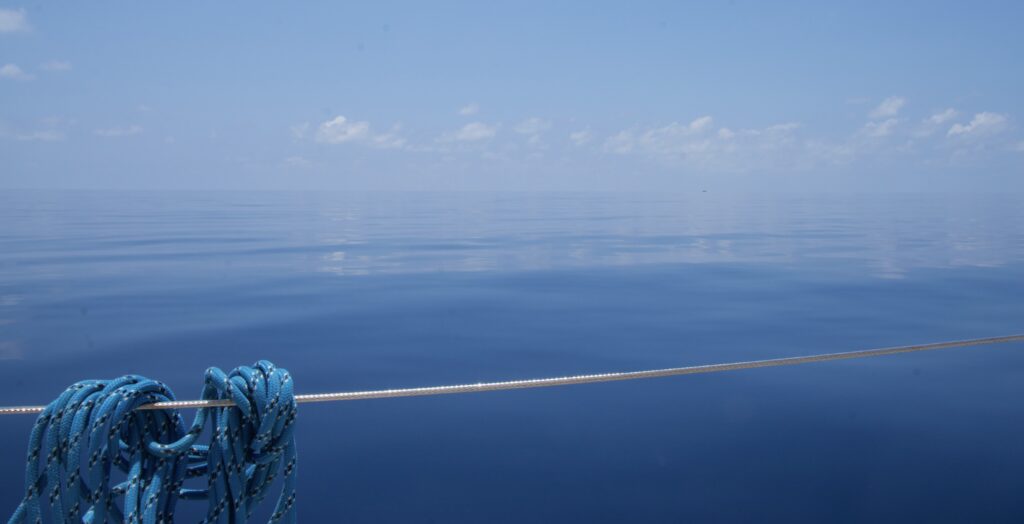
The snorkelling was disappointing but seven large bat fish took up residency under Vega and every time we went swimming would come right up to within a foot to inspect us. It was initially quite intimidating to have these inquisitive 18 inch-long fish so close, but it soon felt quite companionable as they followed us around in the water.
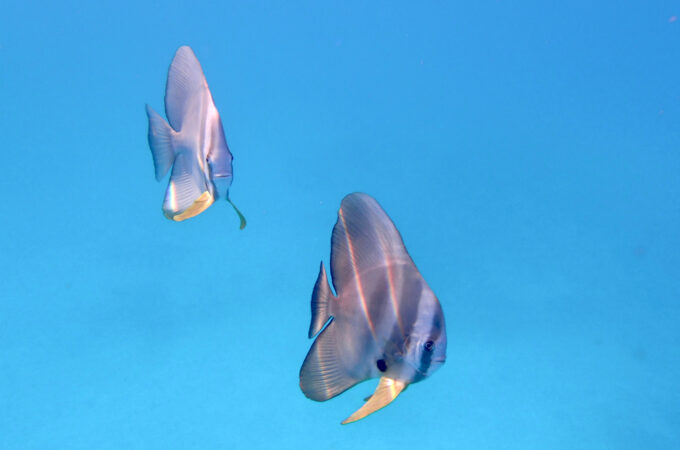
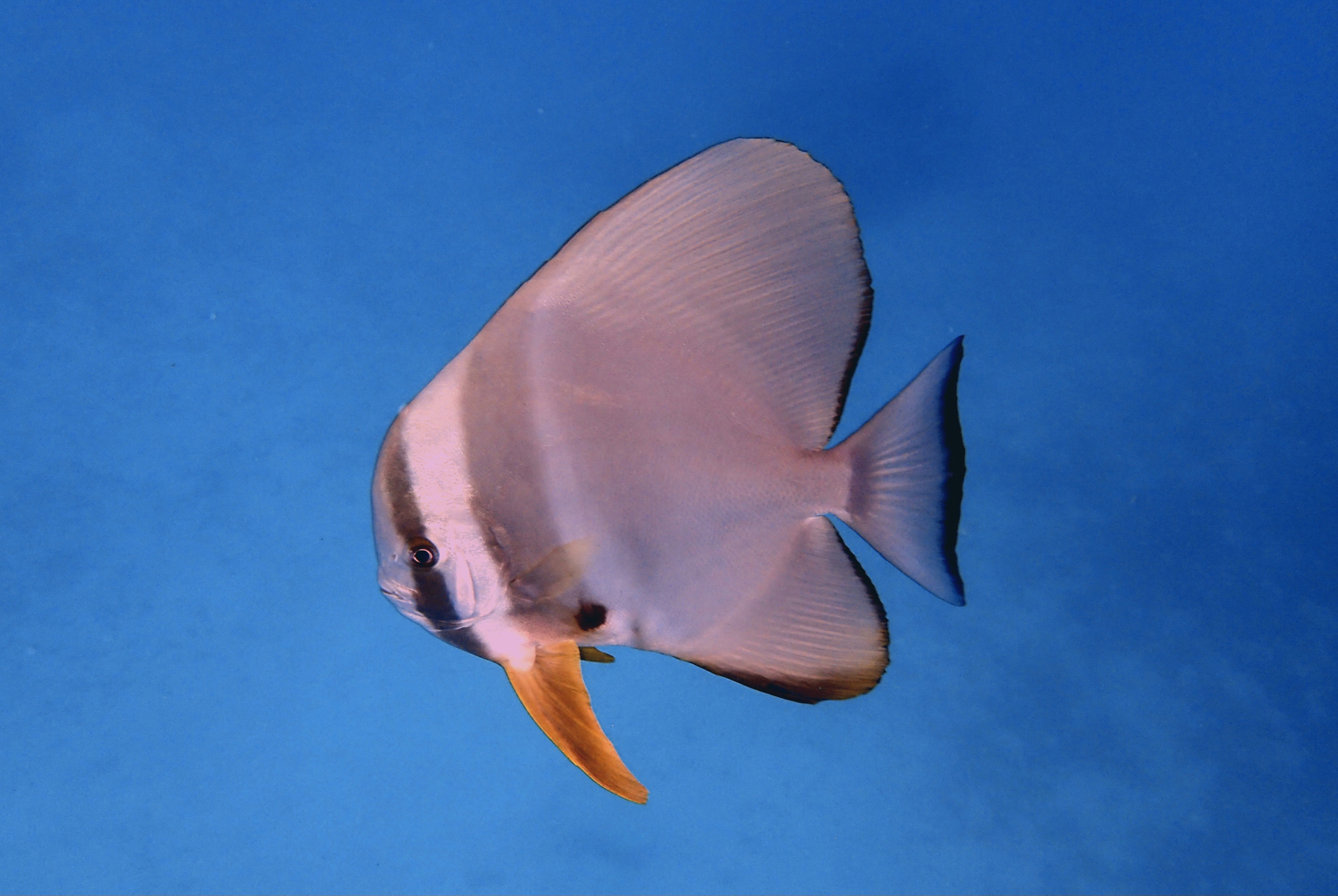
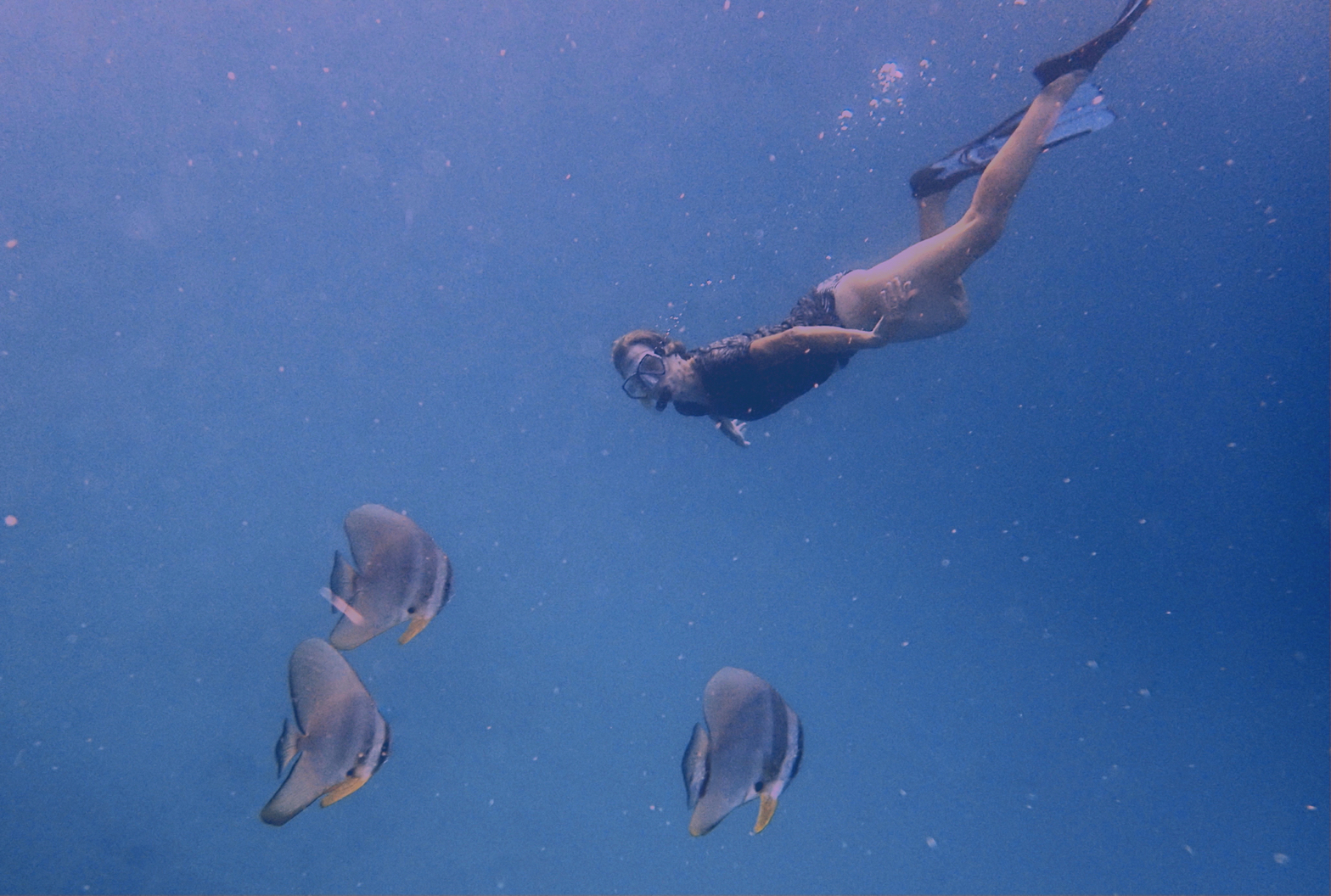
From here we entered North Malé atoll. Malé , the capital of the Maldives, is in the south of the atoll and practically every island sprouts an appendage of overwater bungalows. The other thing we’ve noticed as we get ever nearer to Malé is the increasing amount of plastic rubbish floating in the sea.
We headed for Makunudhoo island in the north of the atoll where there is a small resort. We’d phoned ahead to ask if we could visit and initially they requested a $70 a night anchorage fee, but agreed to waive this as we planned to eat in their restaurant and use the dive centre. We anchored in the lagoon just off the resort and received a warm and effusive welcome. Makunudu island was one of the first resorts in the Maldives and maintains an air of simplicity and calm. Only 36 beachfront bungalows, no overwater villas, no jetskis, banana boats or paragliding. The other tourists were mostly Swiss, German and French, none of the Russians who usually holiday here. The food in the restaurant was so good we ate there for two nights although we turned down the romantic candle lit dinner on the beach at $140 a head. We fitted in a couple of dives with their dive centre and saw reef sharks, giant clams, lobster, rays, a moray eel, a young manta ray gliding past in the distance and lots of colourful fish including clown fish hiding in anemones. The corals are slowly regenerating after the bleaching in 2015.
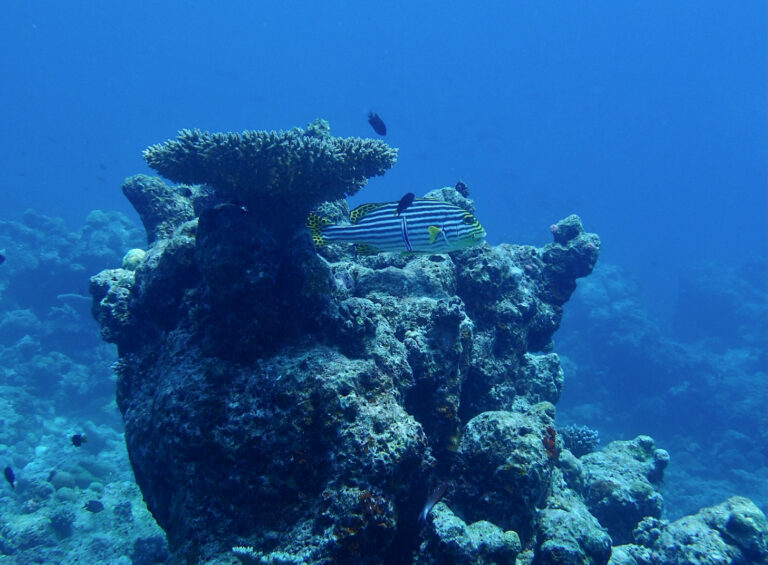
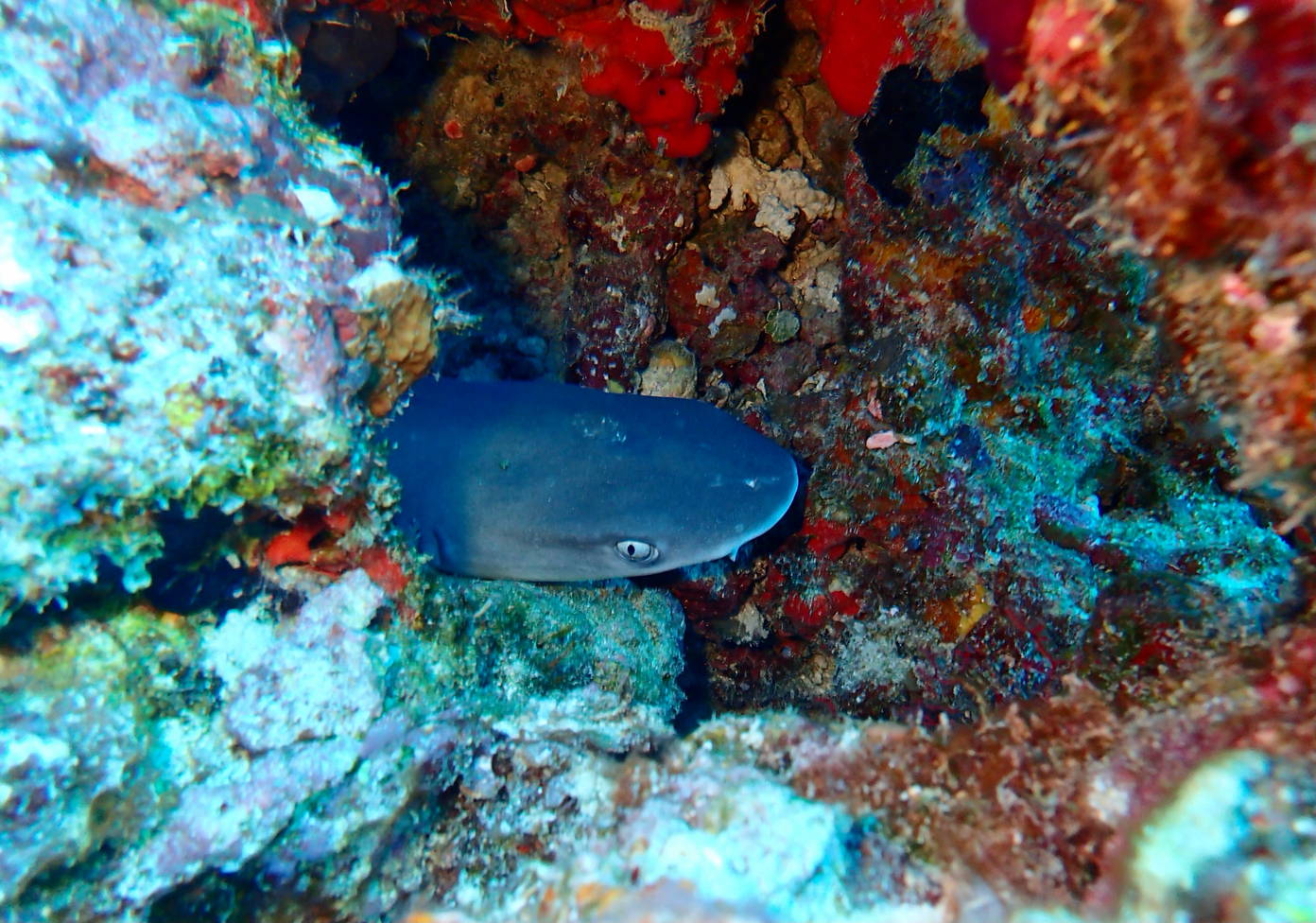
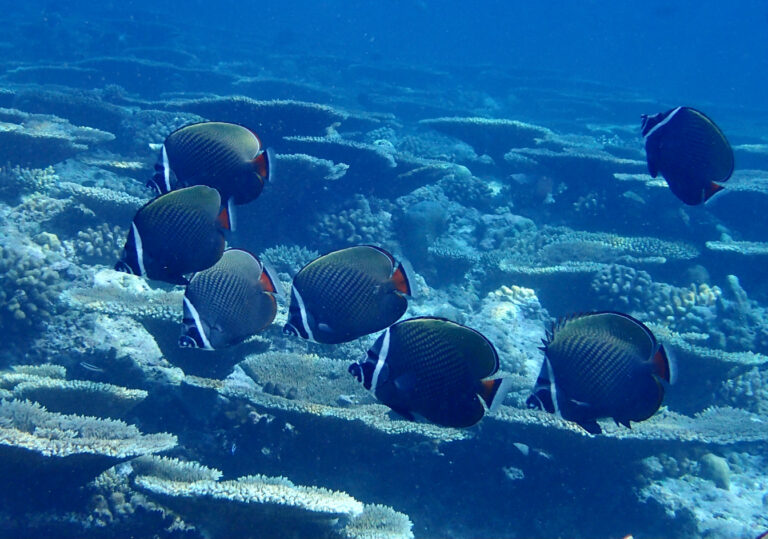
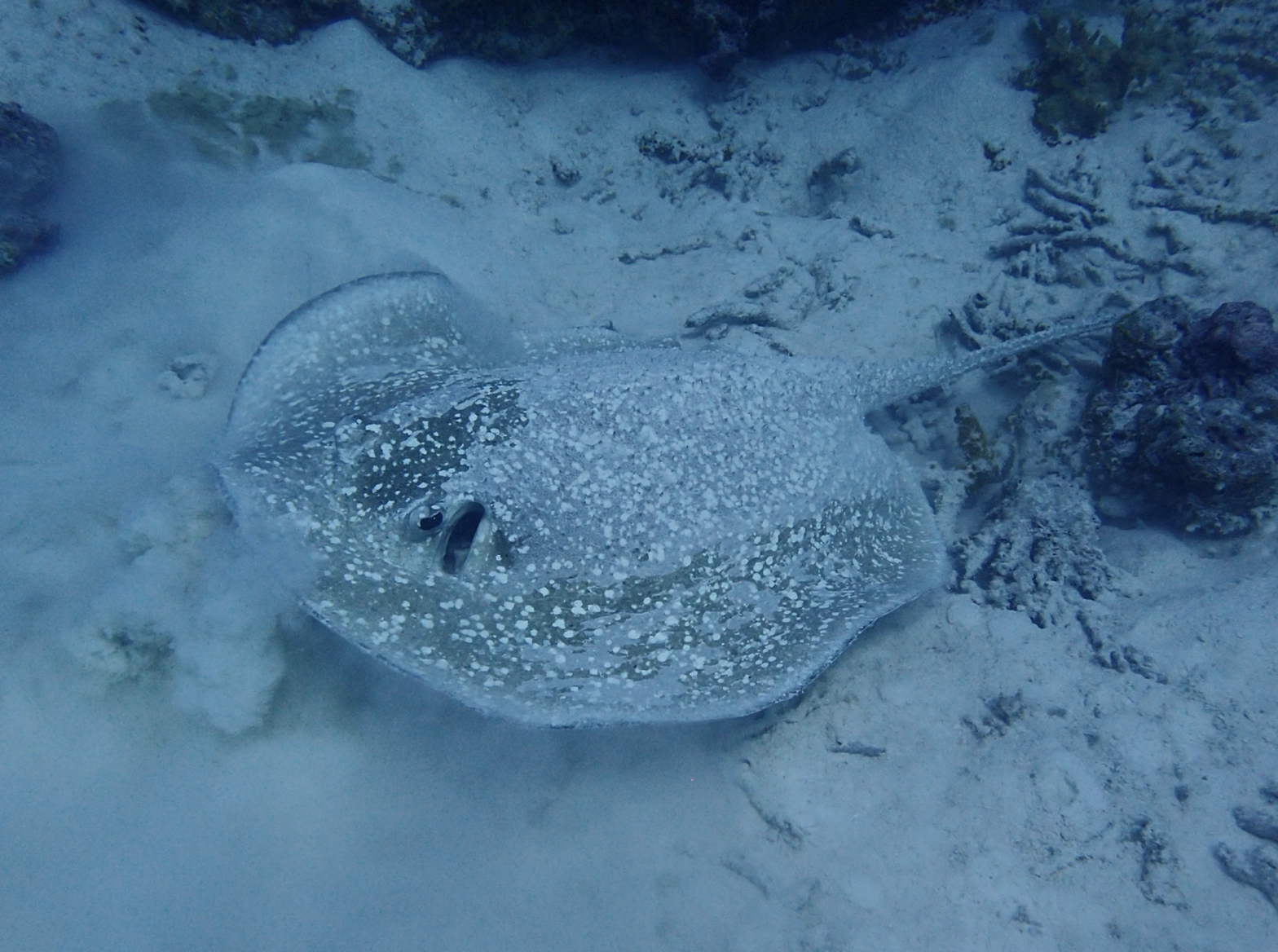
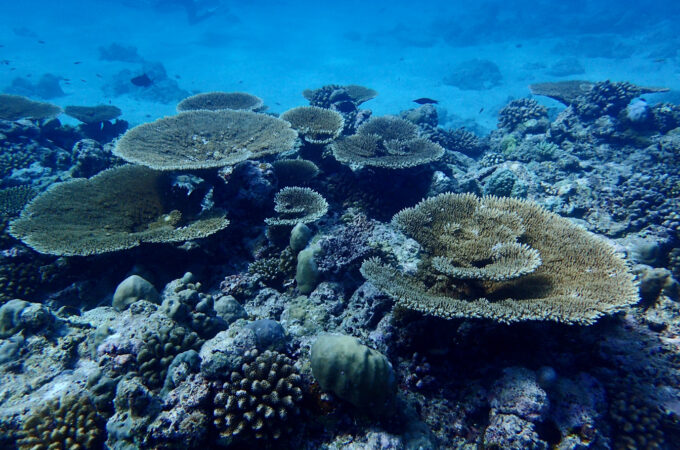
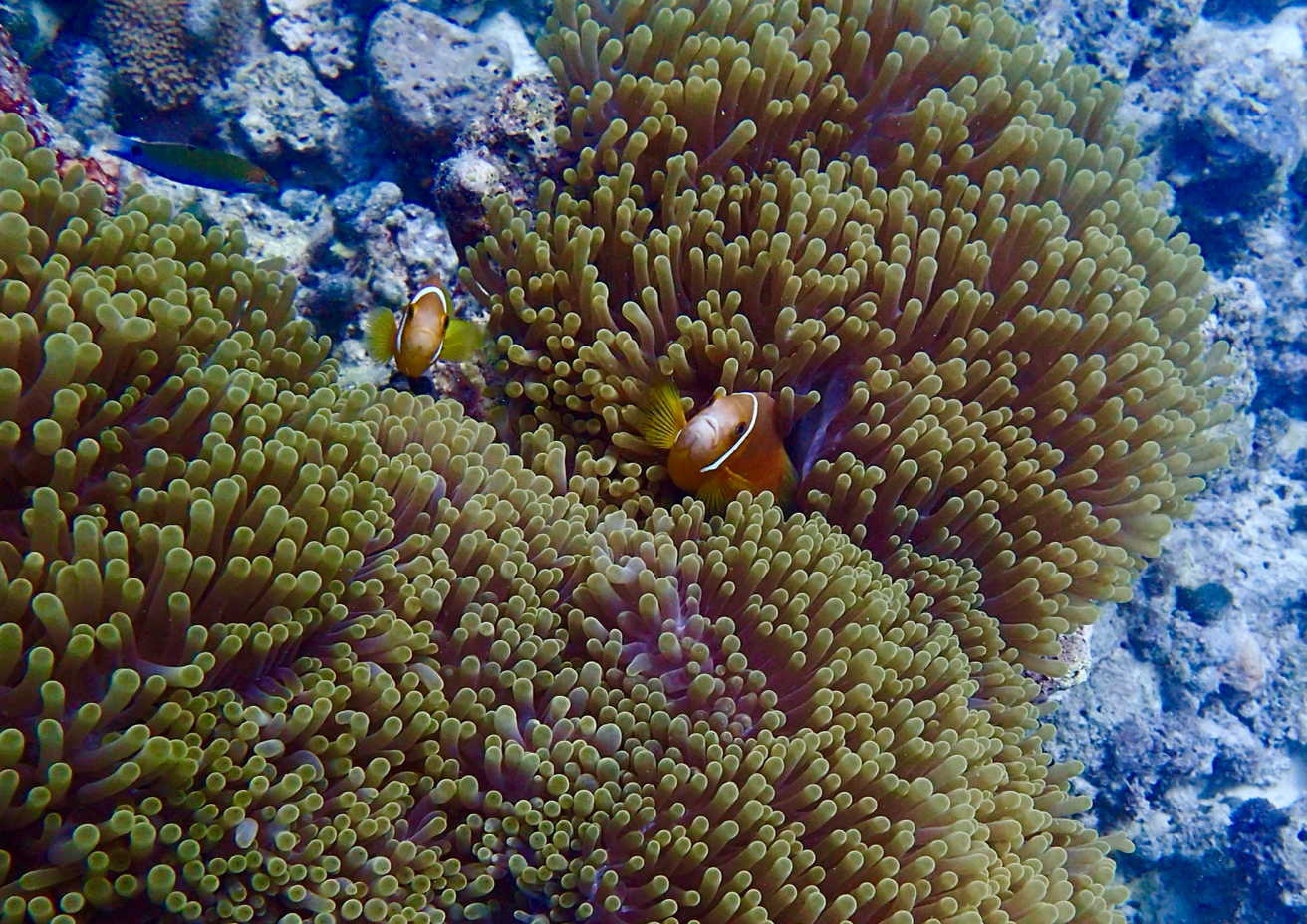
Even the snorkelling on the reef was wonderful with green turtles feeding off weed within the coral.
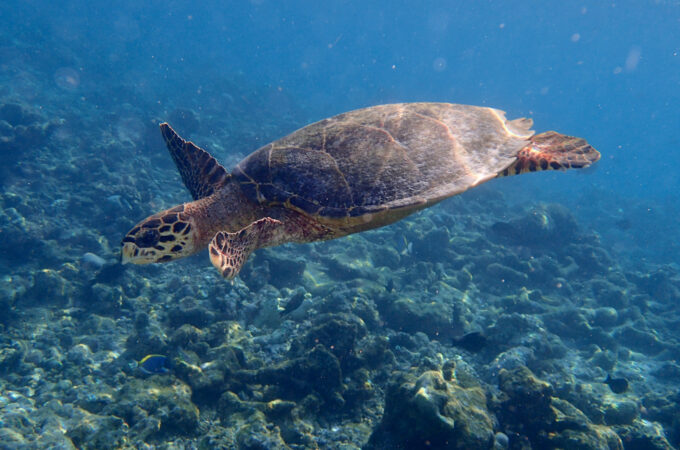
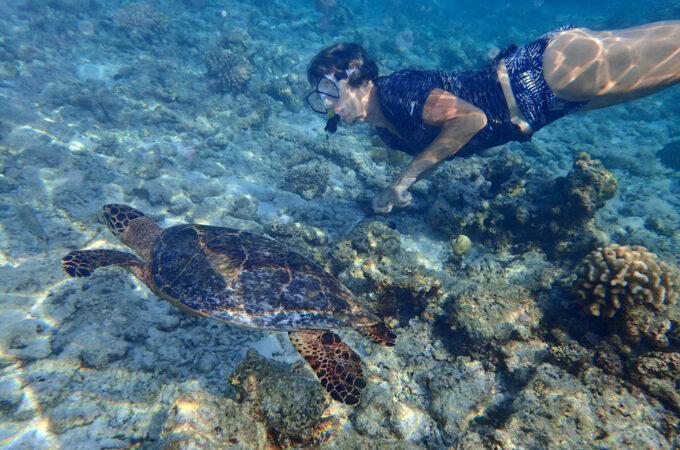
We could have stayed much longer but wanted to push on and meet up with Endorphin and Hecla. The next morning we headed for the nearby manta feeding station just north of Rasfari island on the outside of the atoll. Because there was nowhere close by to anchor I went snorkelling off Vega whilst Hugh nobly stayed onboard, drifting nearby. I joined four snorkelers from the Makunudu resort who had been dropped near to a group of manta rays. We headed towards them, finning like mad. It is a moving experience to have these majestic creatures gracefully gliding past, some within a few feet.
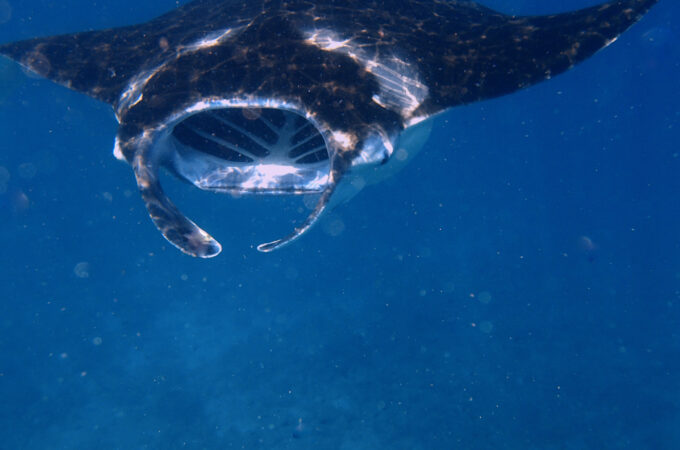
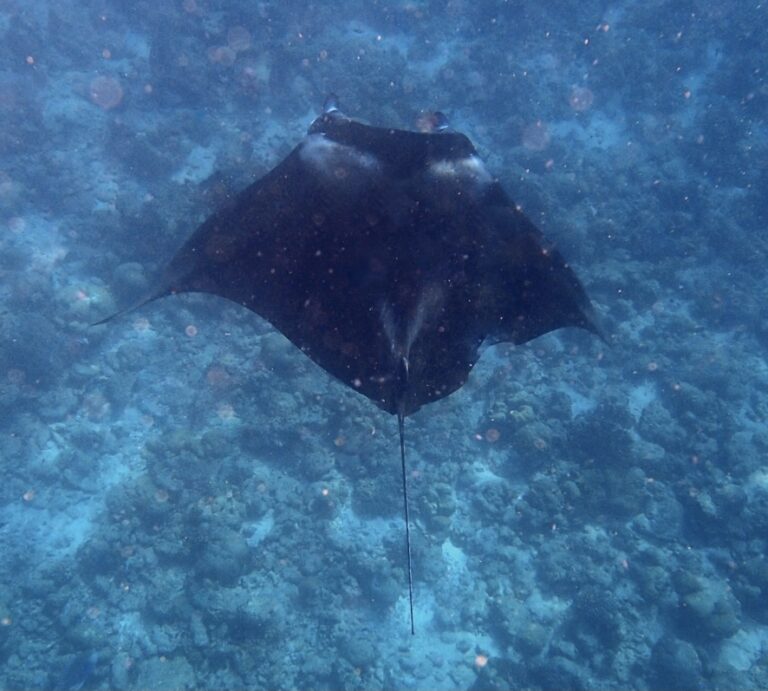
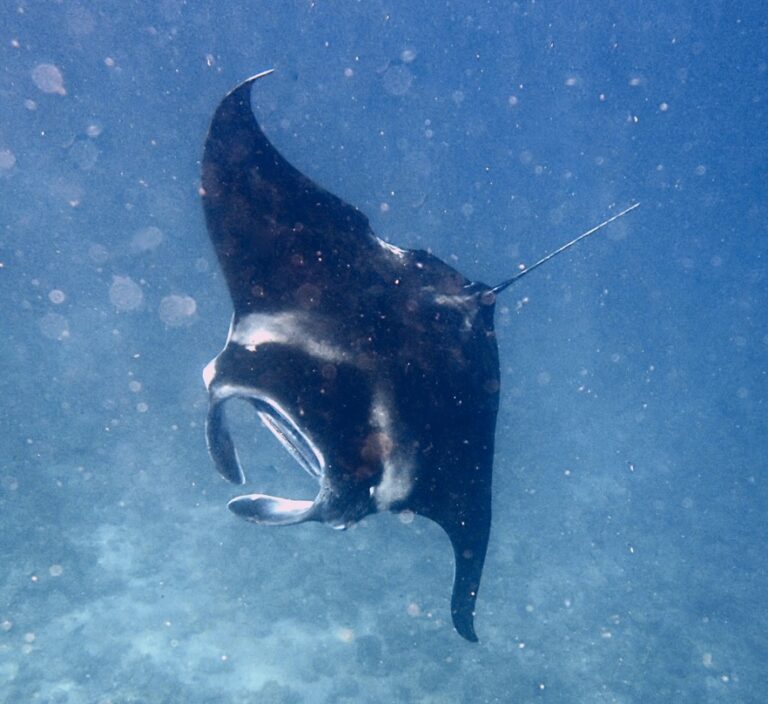
We caught up later that day with the other two yachts at Thulusdhoo, aka Coke Island. I hadn’t known why until we got here and anchored just inside the lagoon in 7m of sand right opposite the Coca-Cola plant, which produces 9 million litres of the tooth-rotting drink a year, the only one in the world using desalinated sea-water. We have yet to do a taste test against the coke we brought from Thailand.
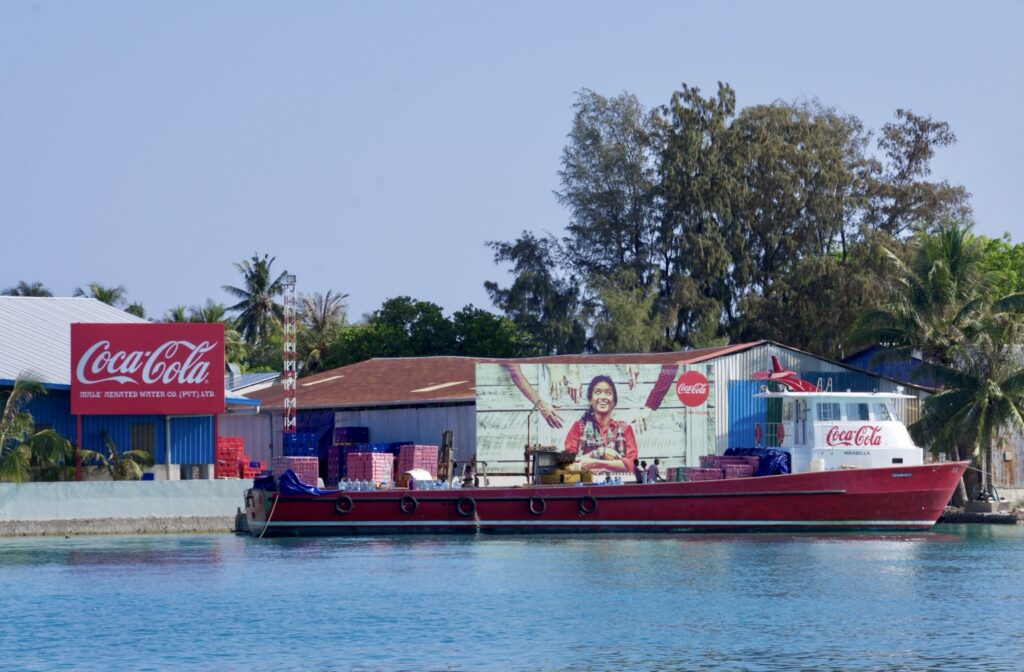
Thulusdhoo is a pretty village of about 1500 people built on the usual grid pattern, with colourful houses, streets of hardened sand, lots of small supermarkets plus an assortment of guest houses, a dive shop, surf shop and restaurants, several mosques, a school, the police station and magistrates court as well as factories for drying tuna and sea cucumber, and boat building workshops.
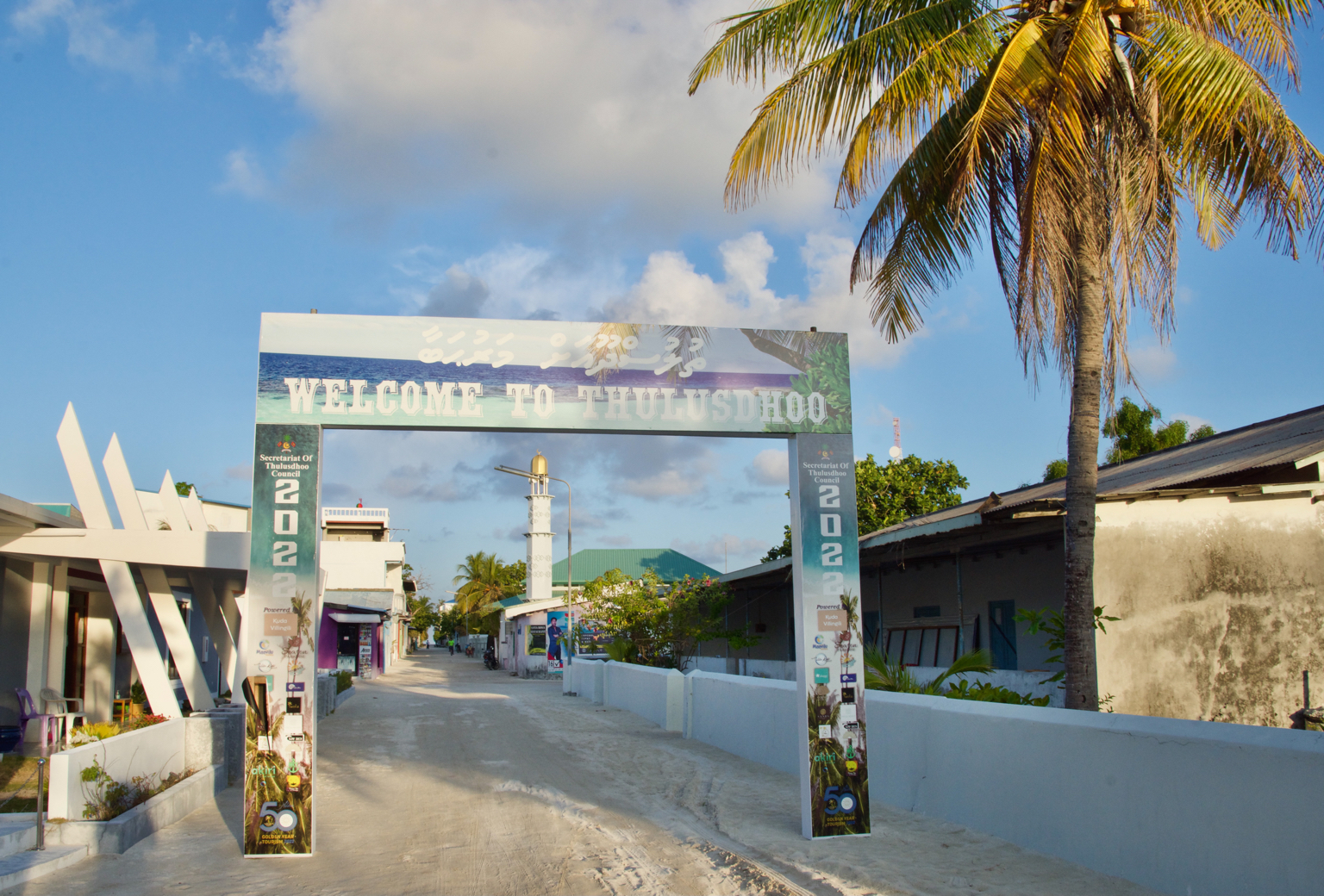
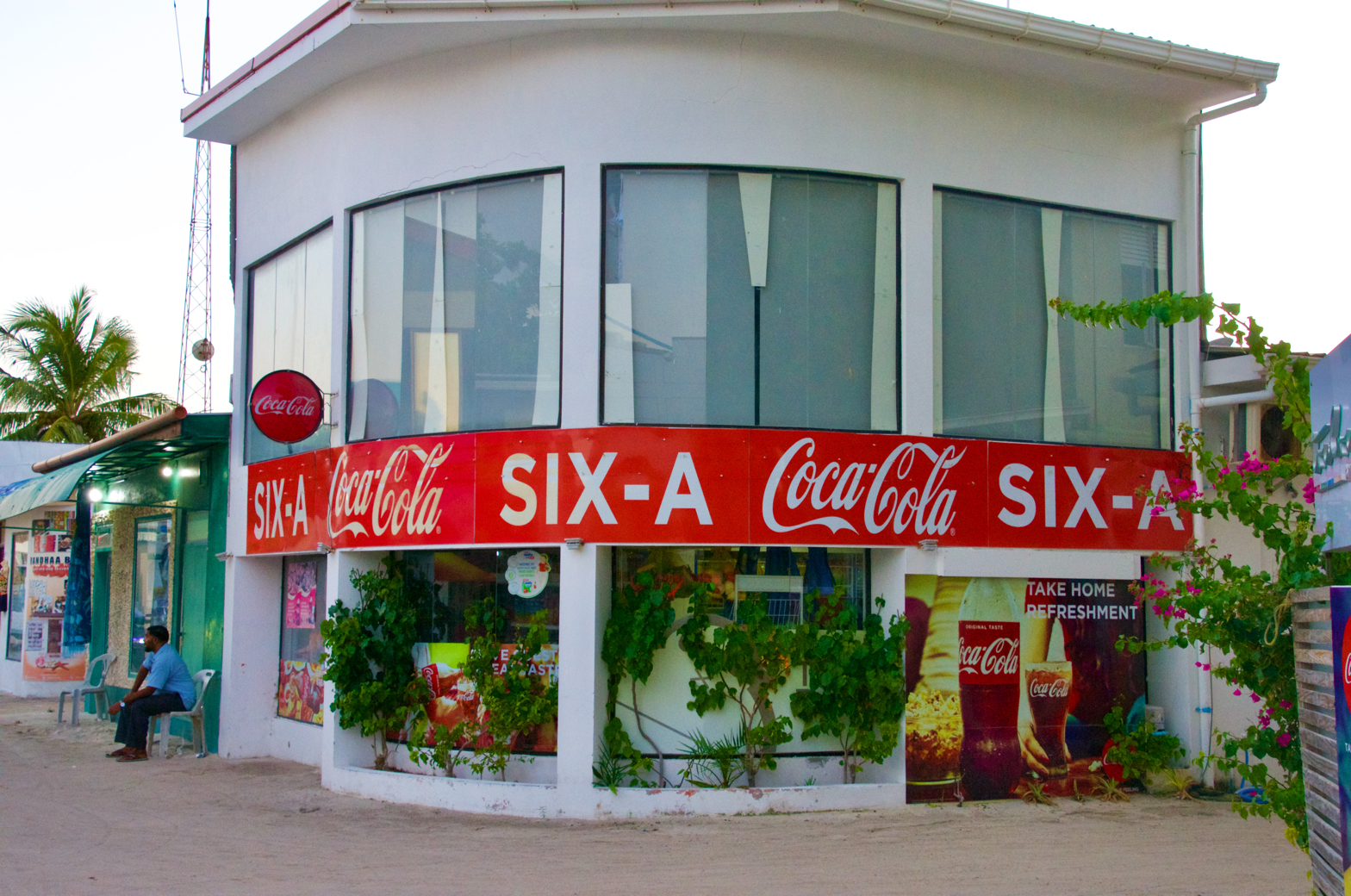
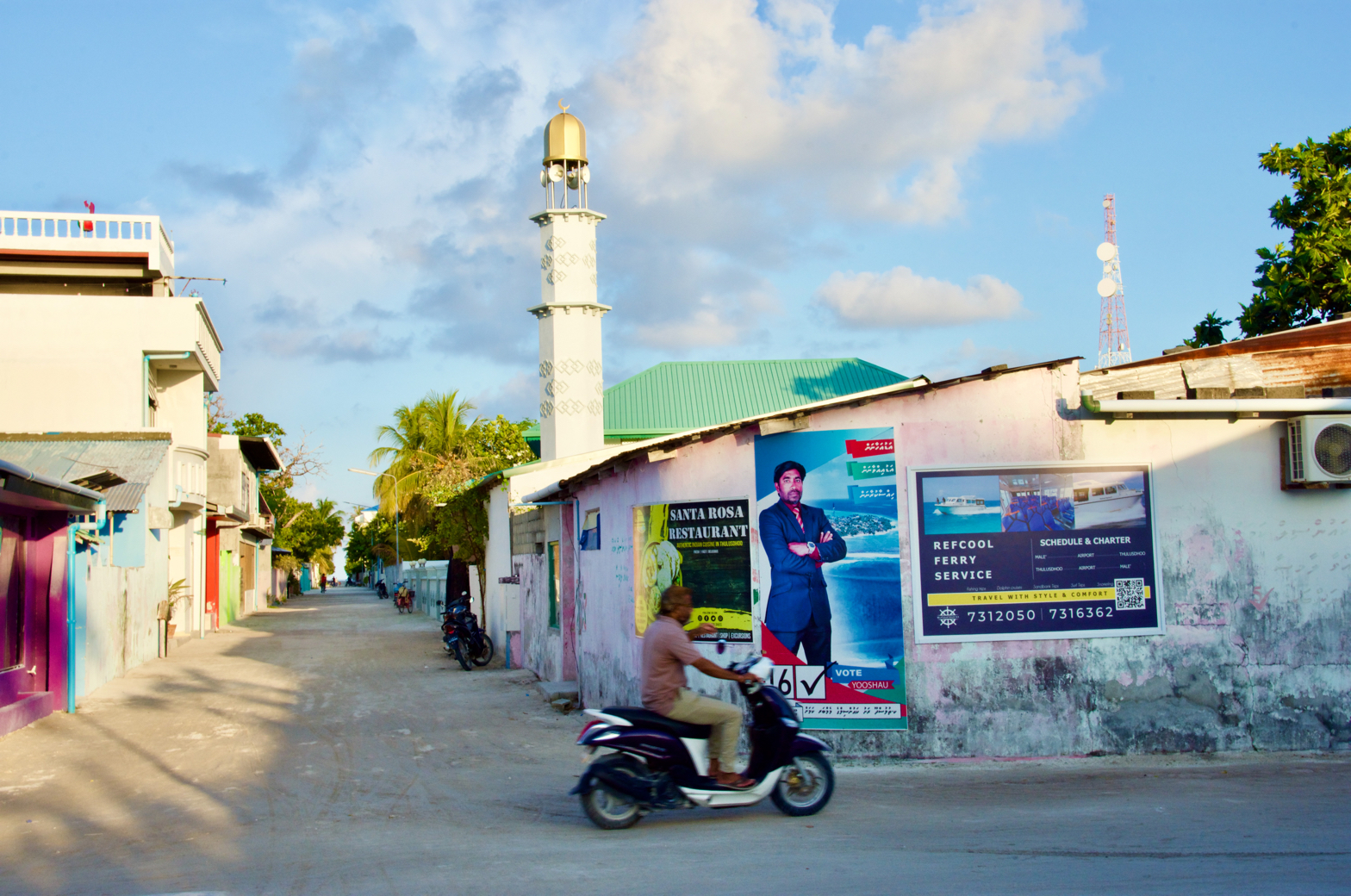
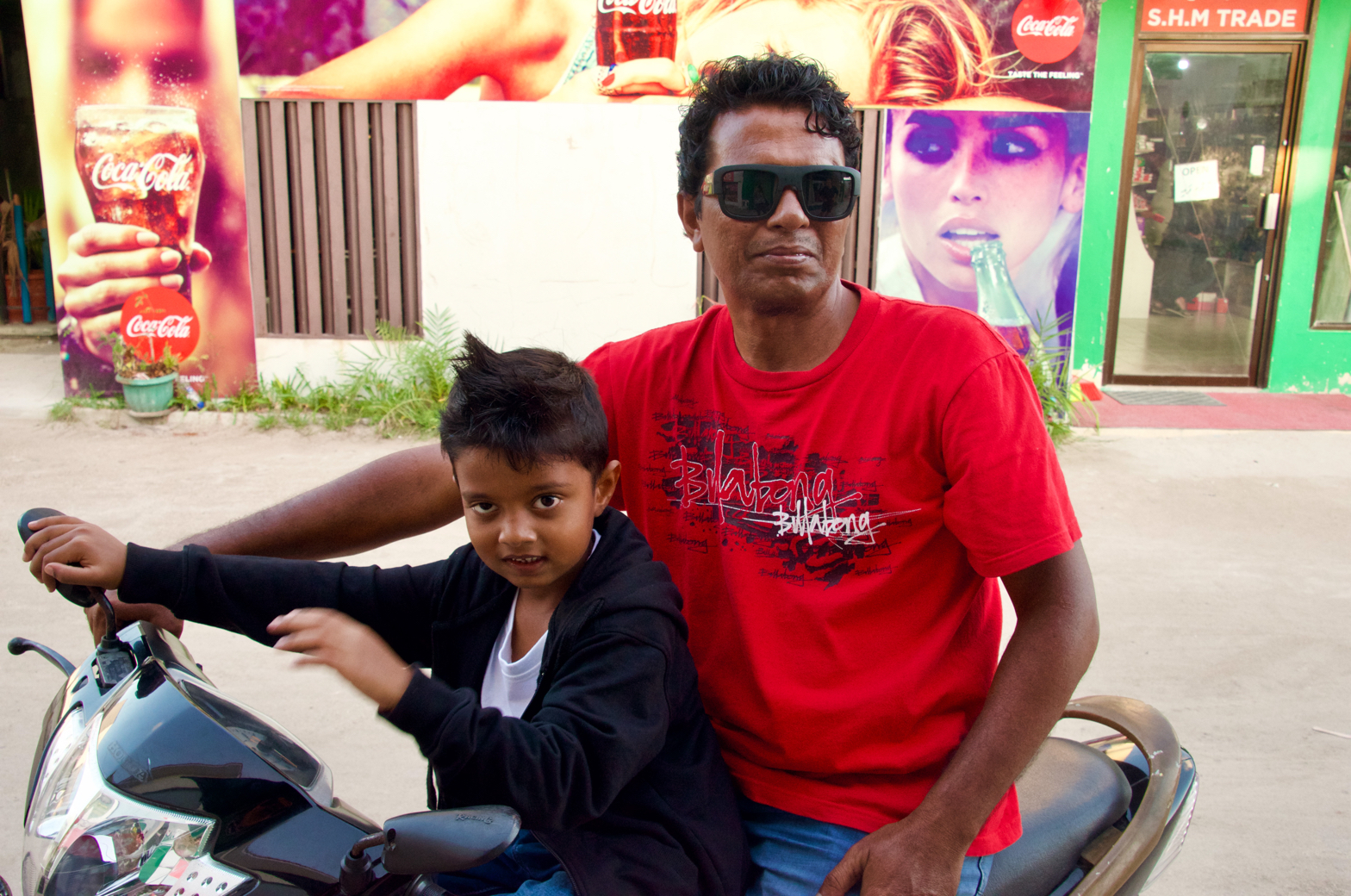
I had initially been under the false impression that there were only local islands, resort islands and uninhabited islands. In 2010 the government changed regulations to allow tourists to stay in villages where locals live and since then guest houses have sprung up on some of the local islands. It allows some insight into Maldivian life for westerners, for budget travel to open up to independent travellers and those that can’t afford the resort prices, as well as providing extra income for locals. It was interesting to see how this worked here. On the east of the island is a designated ‘bikini beach’ where the tourists can dress as immodestly as they like (though topless and nudity are banned and could incur a $1000 fine). Around the village streets they are asked to dress appropriately to show respect for the Muslim community, shirts on for men and shoulders and thighs covered for women. We saw several examples where this was not being followed and chatting to a local he said that this angers some of the people. Alcohol is completely banned on the local islands, even in the hotels, but some guest houses have circumvented this by parking a boat bar offshore where it is possible to drink alcohol or by arranging outings to a nearby resort. Ramadan had begun on April 2nd and for us to eat or drink in the street would be thought extremely insensitive, so Hugh had to forego the Magnum ice cream he fancied.
Thulusdhoo is particularly popular for young visitors as it is one of the best surfing spots in the Maldives, with a good wave just off the reef by the bikini beach. In the evening both locals and tourists promenade along the jetty and looking down into the water you can see sharks, turtles, large stingrays and we spotted a moray eel undulating along which must have been at least 6 foot long.
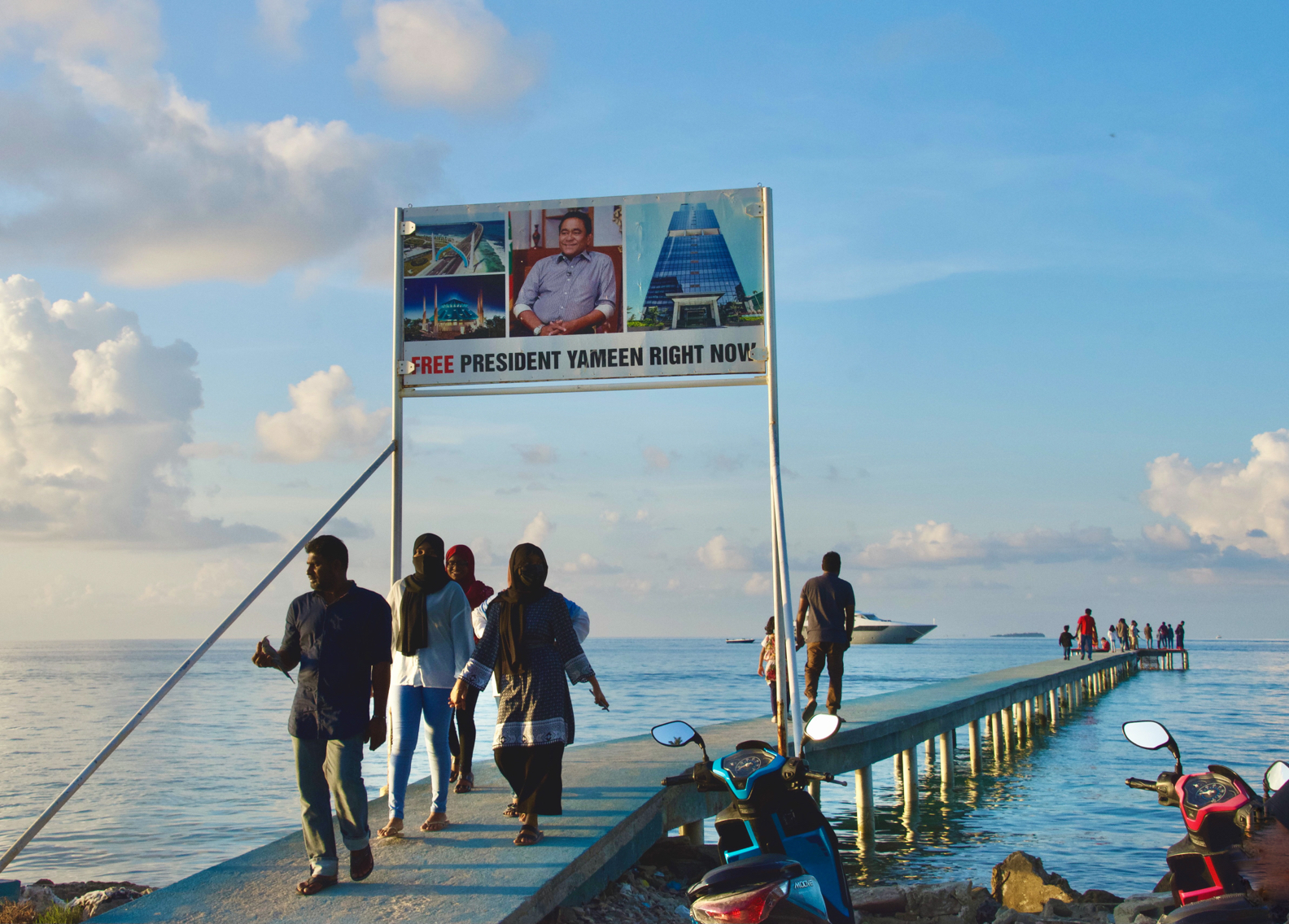
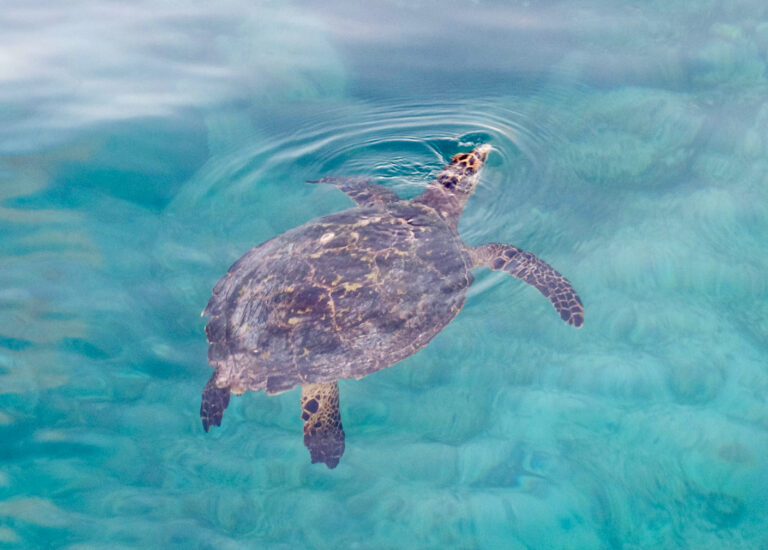
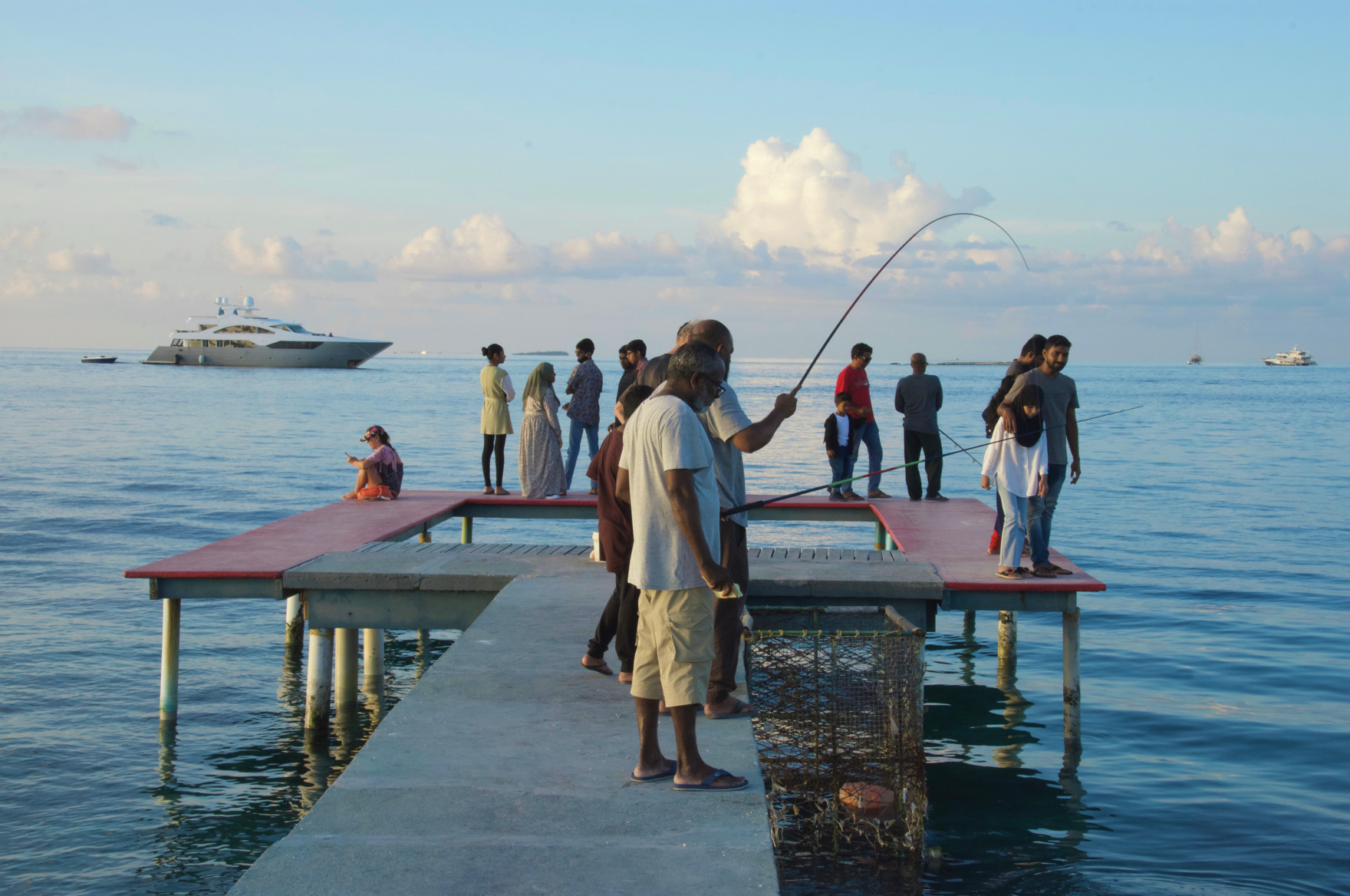
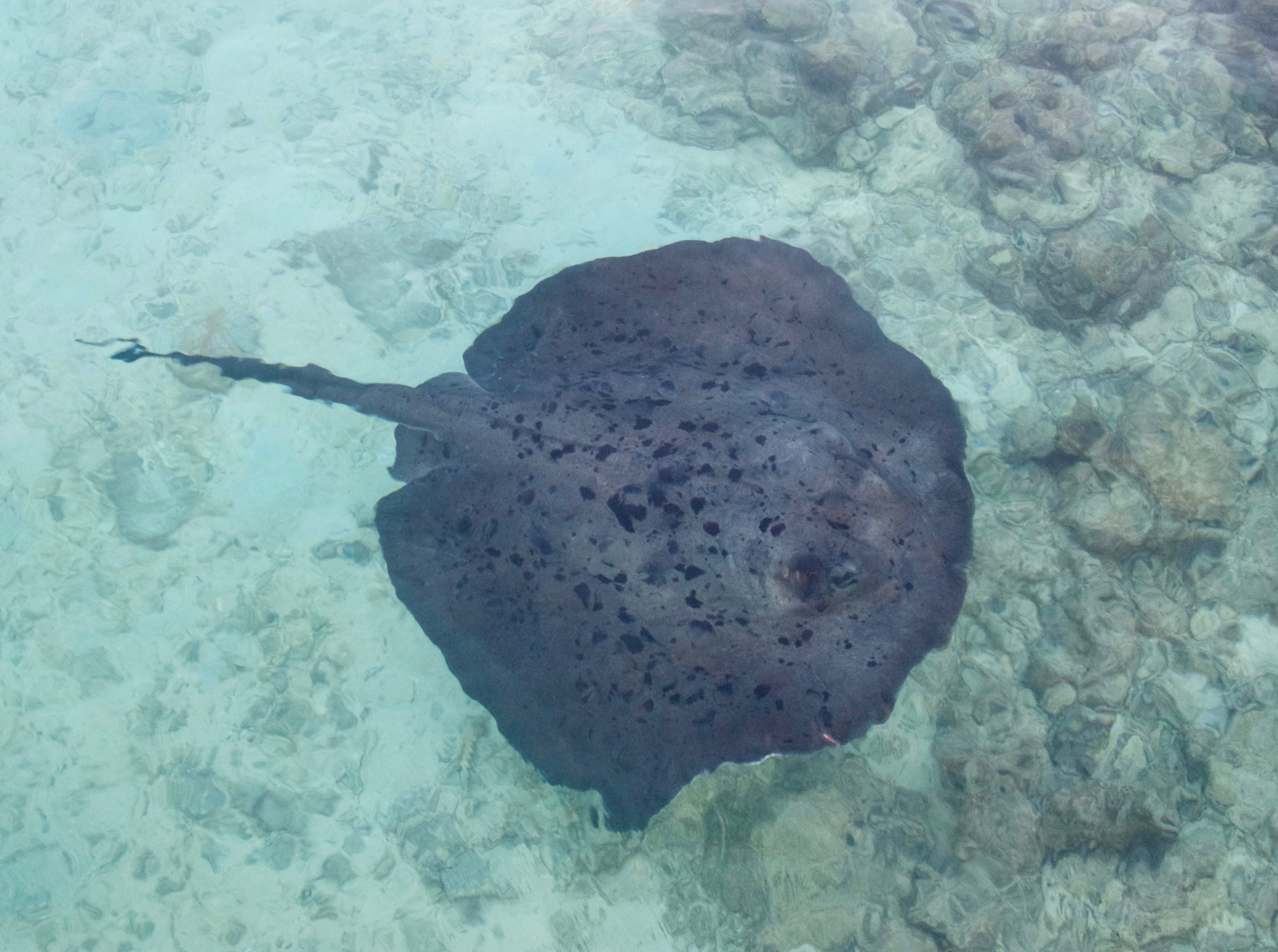
We spent two days here catching up with Colin, Izzi and Jon, with coffee and Izzi’s granny cake on Endorphin and sundowners and supper on Vega . Endorphin had ongoing problems with their fuel tank which needed to be emptied out and for the tank and pipes to be cleaned of all the sludge that had accumulated from dirty diesel. Not an easy task and they were trying to locate a yard that would do the work. Their water maker was still not working properly and Colin and Jon had spent days trying to identify the cause and to fix it, without much success.
In the meantime our replacement exhaust manifold had arrived in Malé from the U.K. but was still stuck in customs needing clearance. It was suggested we anchor in Hulhumale, the island next to Malé, and visit the DHL office to try to collect it.
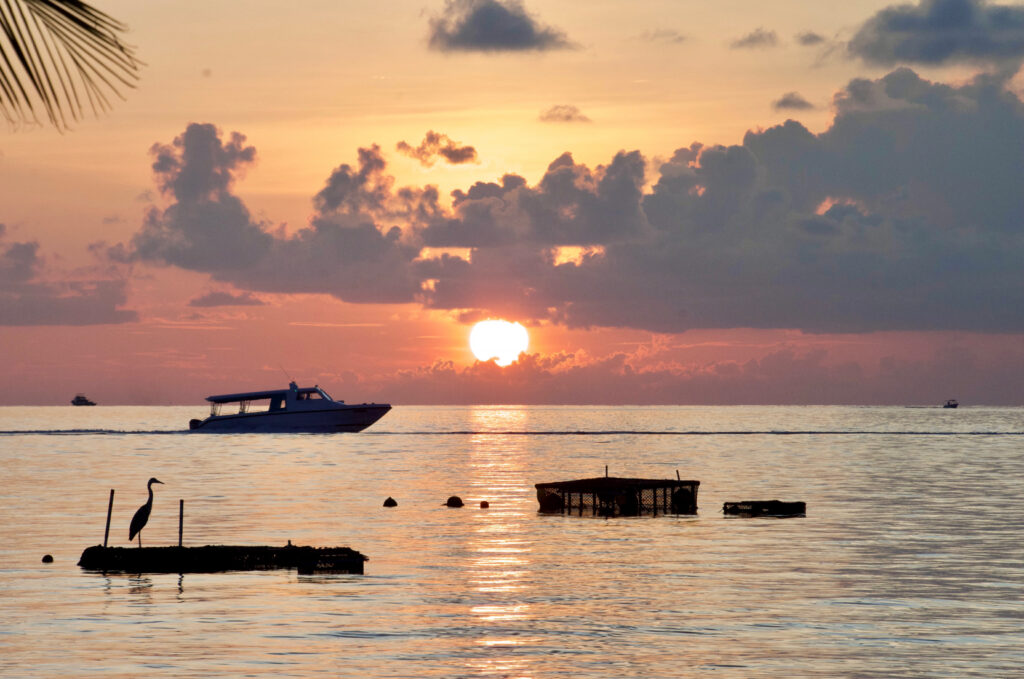
After three nights in Thulusdhoo we left early in the morning for Hulhumale. The last two weeks of cruising had been glorious and now we needed to get the new engine part installed. Surely this would be straightforward?

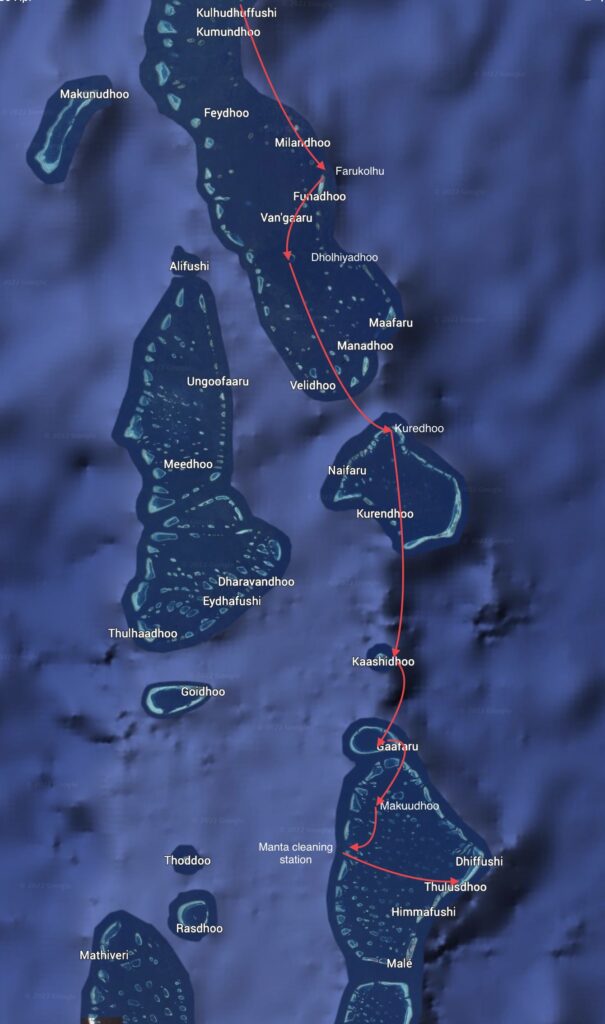
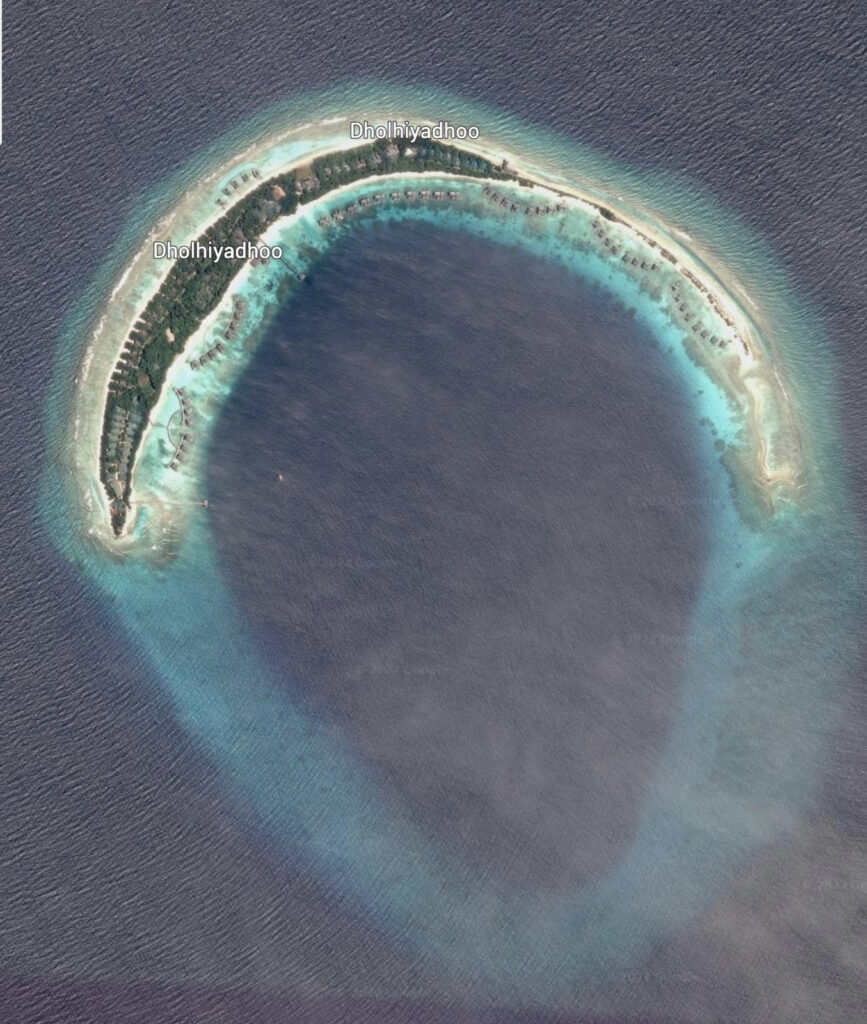
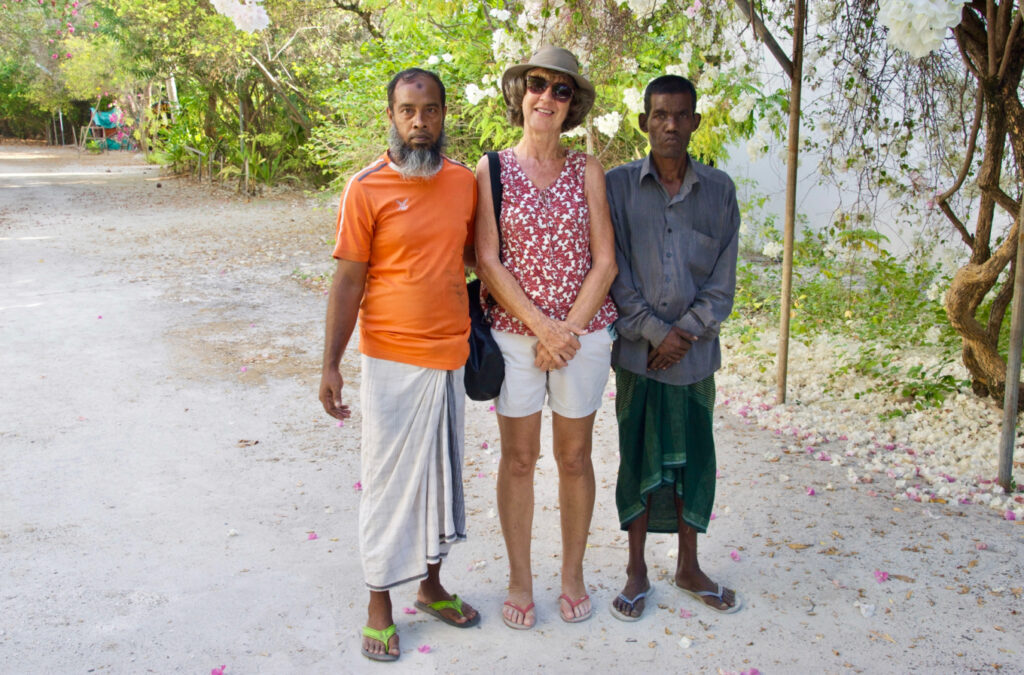
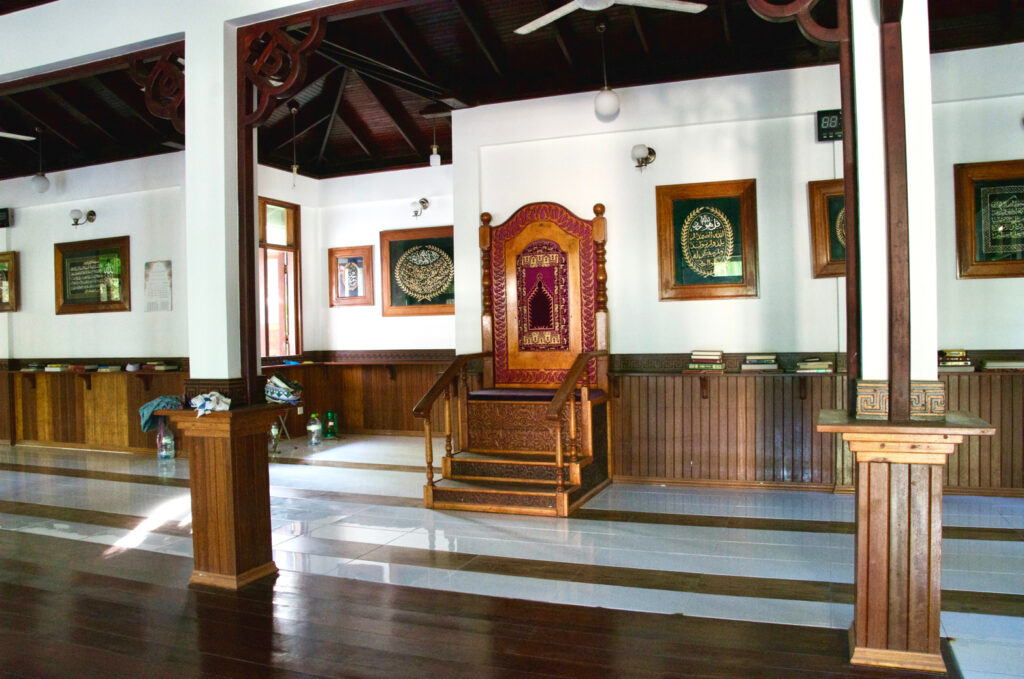
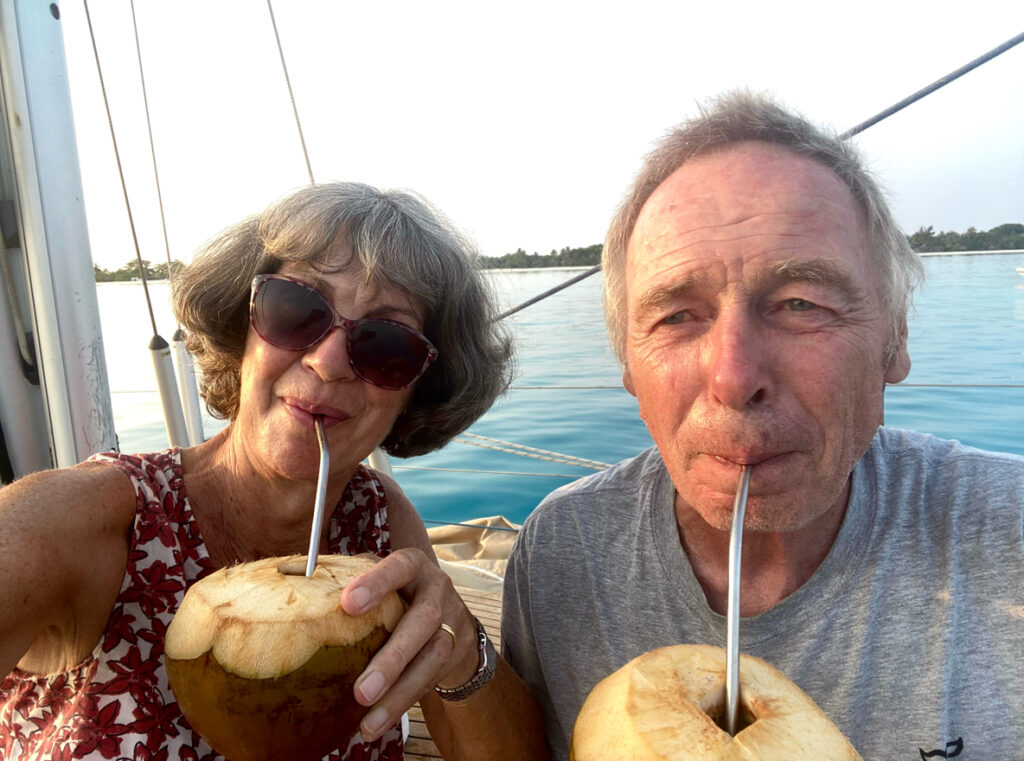
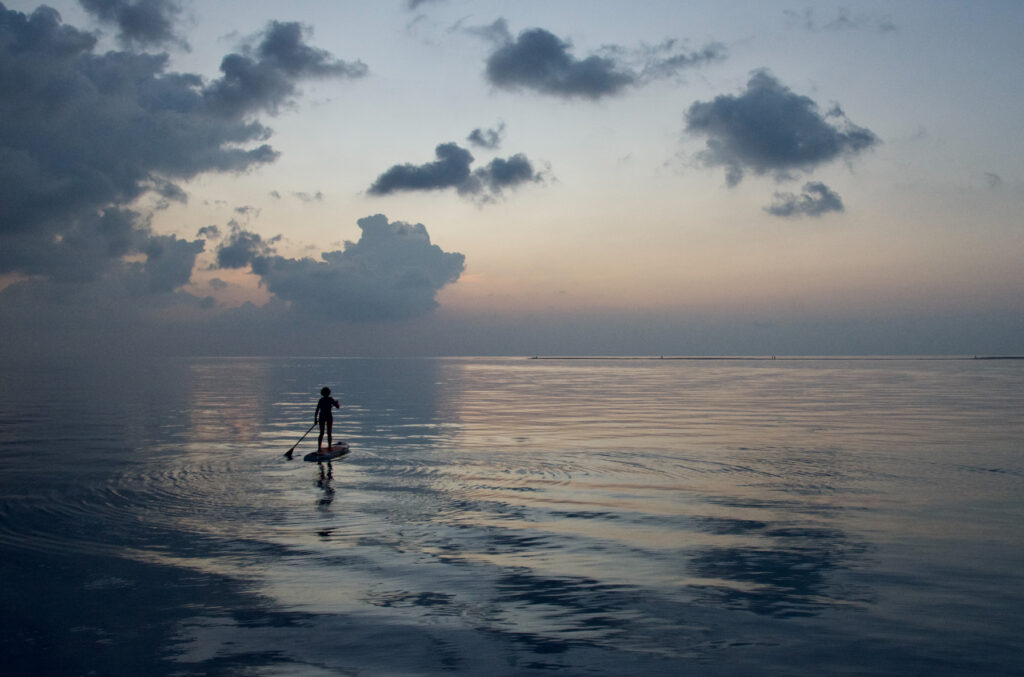
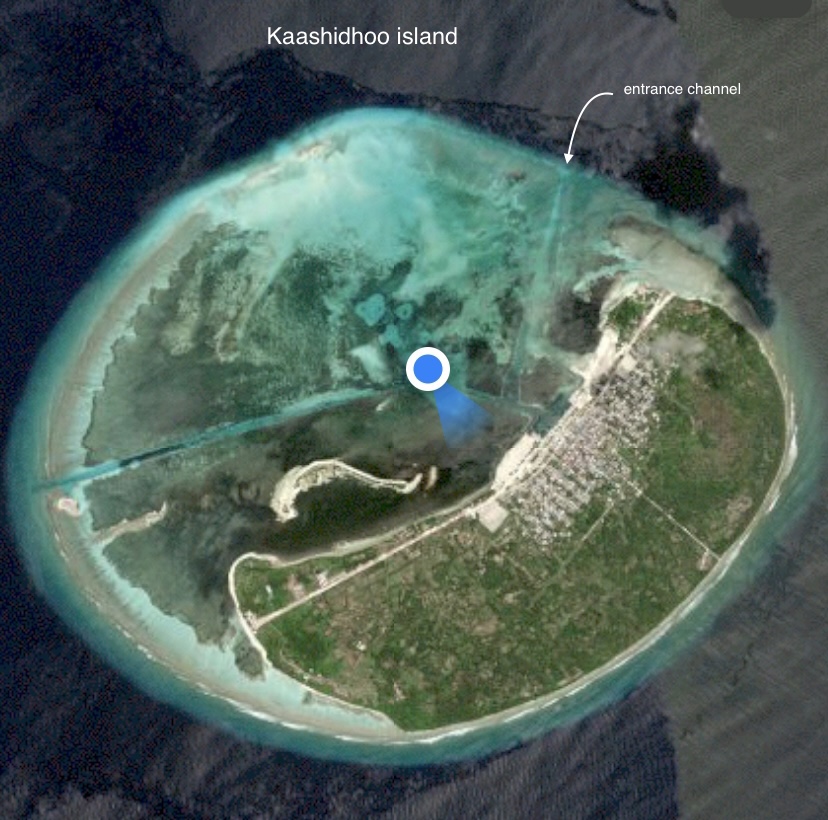
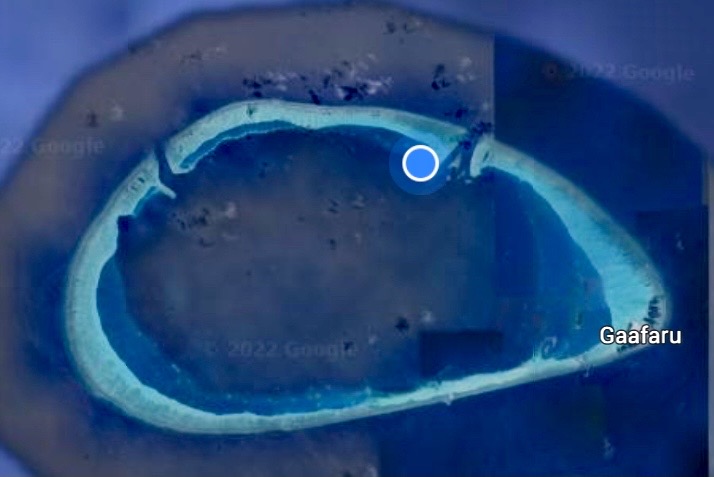

3 Comments
Peter Baylis
April 28, 2022 - 8:05 amGreat read. A well deserved break from your recent mechanical troubles. I hope that exhaust elbow fits without problems.
Annie Sparkes
April 28, 2022 - 9:39 amBit of a cliff hanger at the end. Fingers crossed. I feel sorry for those 2 lonely caretakers, I hope they are still getting paid. While tourism seems to be booming, is there evidence of sea levels rising?
Lots of love (a bit cold in Briz this week) xxx Annie
Paul
April 29, 2022 - 6:52 amHi, great piece again, it does look wonderful, glad your engine troubles ae getting better. Look forward to the next piece.